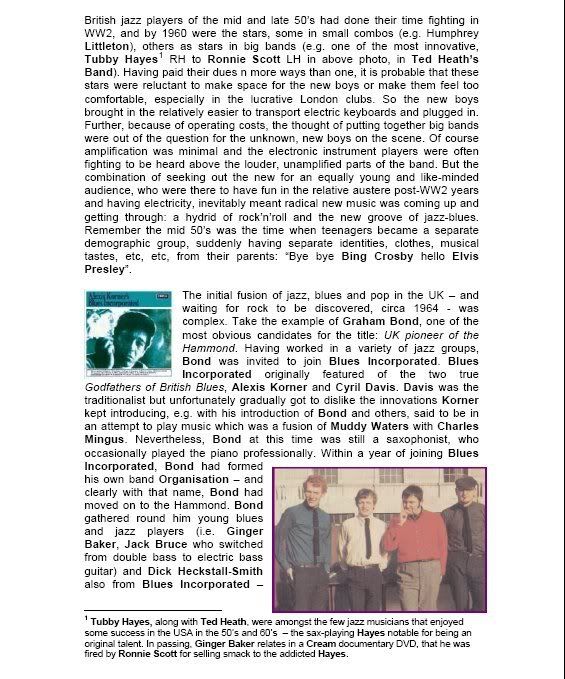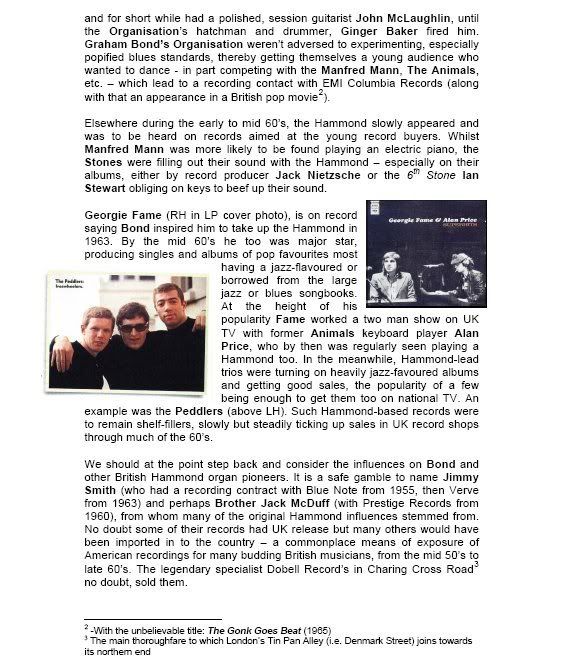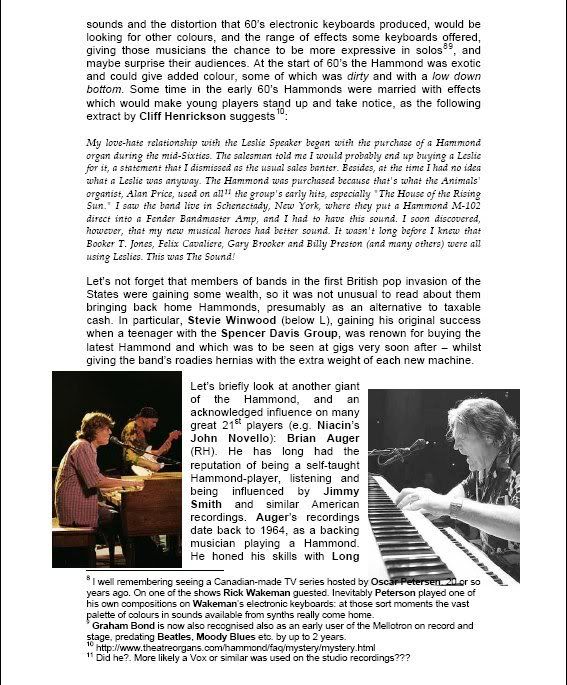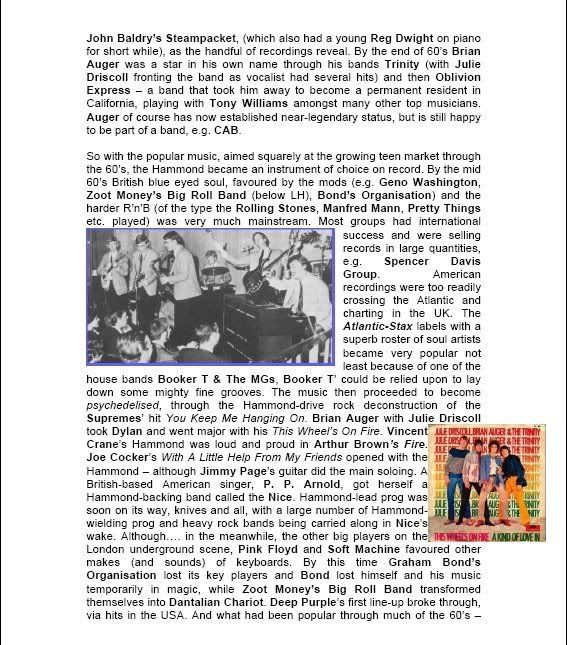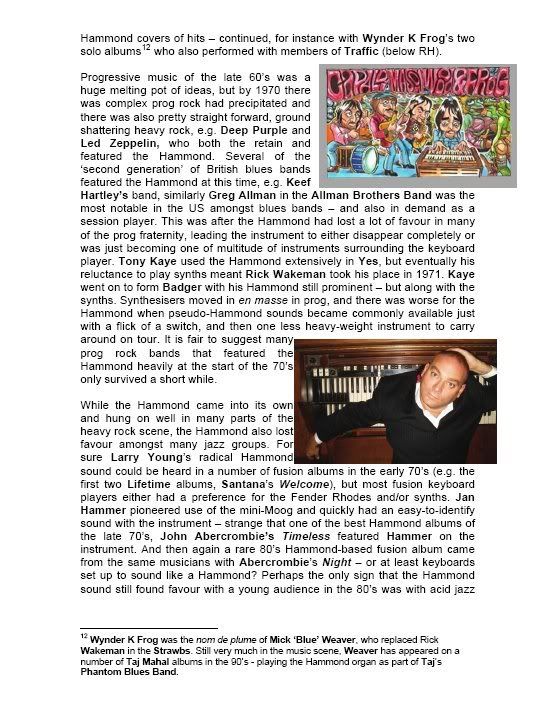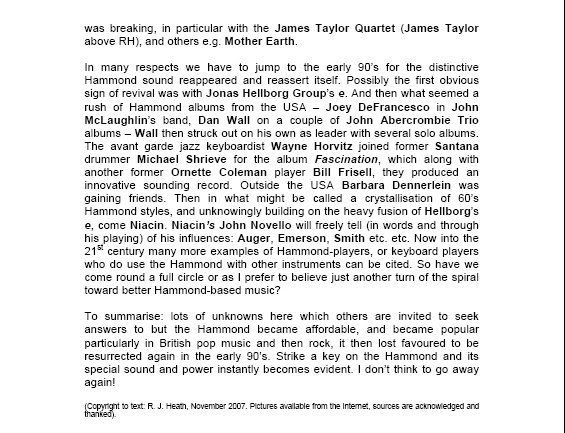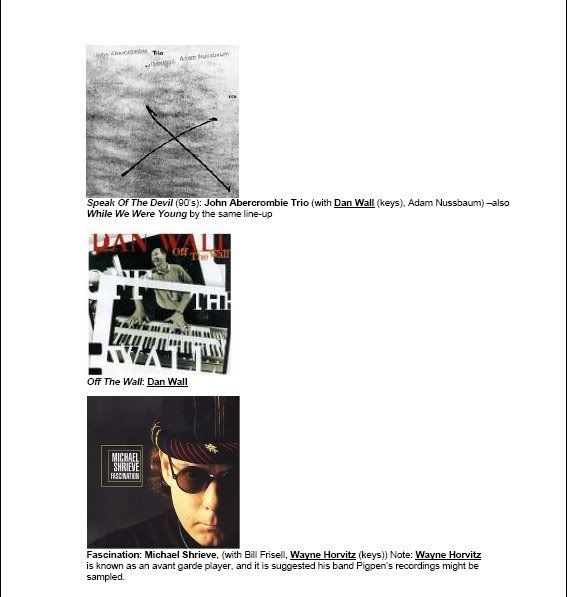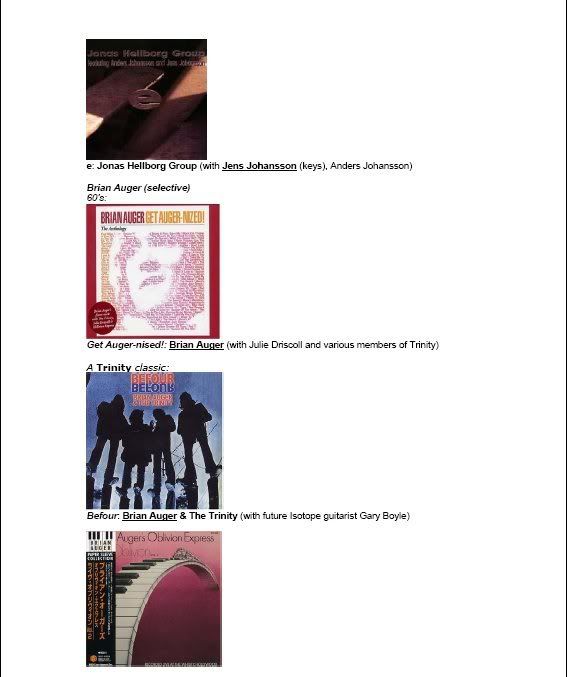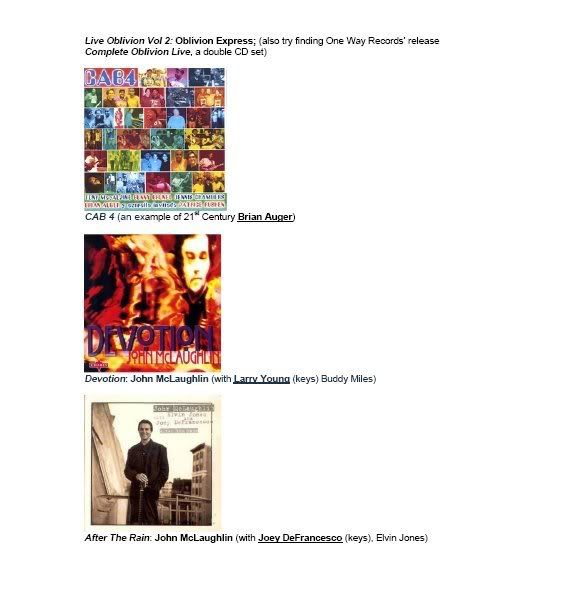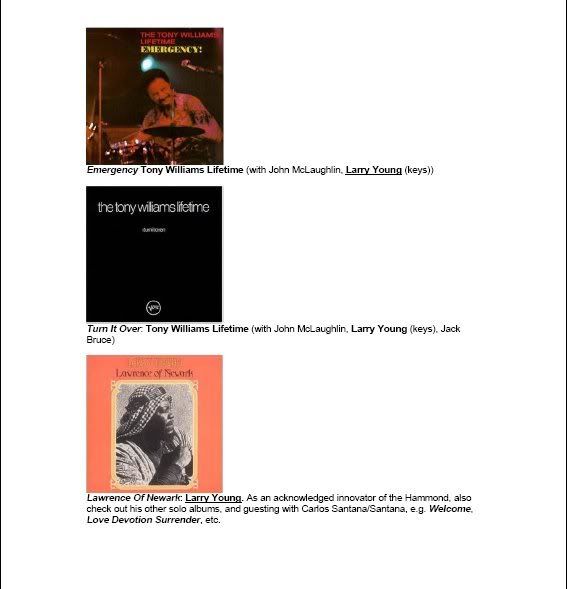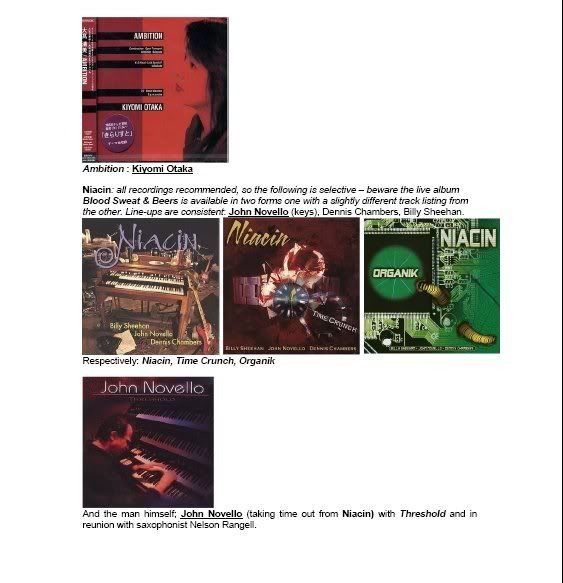Hammond Extravaganza Part 2 : A HAMMOND S
Printed From: Progarchives.com
Category: Progressive Music Lounges
Forum Name: Prog Recommendations/Featured albums
Forum Description: Make or seek recommendations and discuss specific prog albums
URL: http://www.progarchives.com/forum/forum_posts.asp?TID=43662
Printed Date: April 25 2024 at 14:42
Software Version: Web Wiz Forums 11.01 - http://www.webwizforums.com
Topic: Hammond Extravaganza Part 2 : A HAMMOND S
Posted By: erik neuteboom
Subject: Hammond Extravaganza Part 2 : A HAMMOND S
Date Posted: November 20 2007 at 12:56
|
AND NOW FOR SOMETHING COMPLETELY DIFFERENT .....
....THE HAMMOND ORGAN “From a poor man’s pipe organ to a progrock musician's big band” PART ONE: Chapter 1: Introduction
Chapter 2 : The history of the Hammond organ Chapter 3: How does the Hammand organ and Leslie box work? By PA member Pierreolivier Chapter 4: The heavy weighted Hammond models on the small catwalk PART TWO: Chapter 5: A personal Hammond story: a meeting with my hero Thijs Van Leer Chapter 6: ‘Hammond Heroes’: pioneers, masters and specialists on the Hammond organ Chapter 7: 1967-2007 Fourty years of Hammond sounds in progressive rock PART THREE: Chapter 8: Quotes about the Hammond organ by Dutch progrock musicians (from Rick van der Linden to Thijs van Leer and Ton Scherpenzeel) Chapter 9: My favorite Hammond organ drenched CD’s and DVD’s PART FOUR: Chapter 10: A Hammond story by PA member and jazz specialist Dick Heath Chapter 11: PA members about the Hammond organ and their favorite Hammond Albums: Jim Garten, Ozzy Tom, Jimmy Row, Easy Money, Rivertree and Dalt99) Chapter 12: This is not a Hammond organ! (about the Farfisa, Gibson and Vox Continental organs) Chapter 13: Sources of information Chapter 14: Interesting links other three parts will follow in the
forthcoming days.
THE HAMMOND ORGAN “From a poor man’s pipe organ to a progrock musician's big band”
PART ONE Chapter 1: Introduction Chapter 2 : The history of the Hammond organ Chapter 3: How do the Hammond organ and Leslie speaker work? By PA member Pierreolivier Chapter 4: The heavy weighted Hammond models on the small catwalk Chapter 1: An introduction The Hammond organ was already embraced by the jazz musicians in the early Sixties but in the second part of the Sixties and in the first part of the Seventies it turned out to be a perfect keyboard for many (progressive) rock artists, especially because the powerful and varied Hammond organ could compete with the many decibels coming from huge Marshall guitar amplifiers! If you look at the amount of Sixties and Seventies hits with the Hammond organ in their sound, it’s amazing, just look at this list:
- Green Onions and Time is Tight by Booker T & The MG’s
http://www.amazon.com/gp/product/images/B000002IR7/ref=dp_image_0/105-3380758-6476466?ie=UTF8&n=5174&s=music">
 - You Keep Me Hangin’On by Vanilla Fudge
- Fire by The Crazy World Of Arthur Brown - Born To Be Wild by Steppenwolf - A Whiter Shade Of Pale by Procol Harum 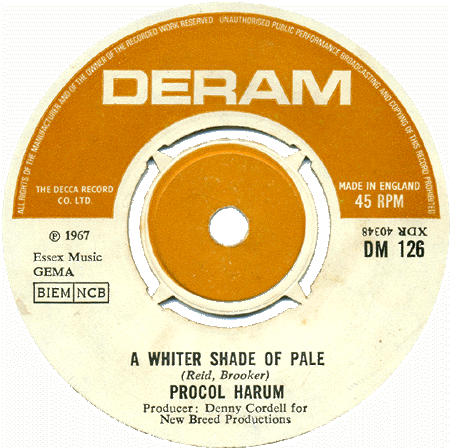 - Gimme Some Lovin’ by The Spencer Davis Group
- Hold Your Head up by Argent - With A Little Bit Help From Your Friends by Joe Cocker - Sympathy by Steve Rowland & Family Dogg - Black Magic Woman by Santana and ... of course Child In Time by Deep Purple, incredible!
 http://www.hitparade.ch/showitem.asp?key=63&cat=s#"> http://www.hitparade.ch/showitem.asp?key=63&cat=s#">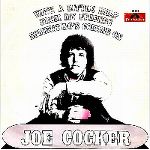  I have always loved the sound of the Hammond organ and other ‘vintage keyboards’ like the Mellotron, Minimoog synthesizer and Solina string-ensemble. In the autumn of 1998 I got the idea to write a ‘vintage keyboard’ special for the Dutch progrock magazine iO Pages. My knowledge about the Mellotron and Moog synthesizer is decent but the Hammond organ was technically a kind of unknown keyboard for me. So I started to collect information and stumbled upon the name Frank Obertop that was given by several Hammond organ fans. He is the editor of the Dutch Hammond organ society named Turning Wheel and he even appeared on TV talking about the Hammond organ during a popular music programm. It was quite easy to get in touch with him, he reacted enthousiastically on my plans for a special Hammond organ chapter in the vintage keyboards special and Frank even invited me to take a look at his Hammond organ collection! This was stored in the basement of an old Victorian-like building in Hilversum, it had been used for a famous Dutch political talk-show entitled Het Capitol, broadcasted every Sunday morning in the Eighties. I will never forget the moment that I entered the basement and looked at all those wonderfully shaped Hammond organs, from the famous B3 to the spinet models and he also owned two huge Leslie speakers. I was stunned and for me this was the key-moment to start my Hammond organ fascination, gradually grown mighty close to my deep love for the Mellotron! In this article you will read about the special, very powerful and varied sound (from soaring in A Whiter Shade Of Pale by Procol Harum to ‘churchy’ halfway the titletrack of Close To The Edge by Yes), the different models, famous and exciting Hammond organ players, the Hammond in progrock, Hammond drenched albums and some PA members will tell you about their fascination, a big hand for the Hammond organ! Chapter 2: History CHAPTER 2 : THE HISTORY OF THE HAMMOND ORGAN
The story of the Hammond organ starts with the man who invented it and gave his name to his invention: Laurens Hammond. He was born in Illinois, USA on January 11th in 1885. After his father’s death in 1898 (thanks Angelo
In 1933 Hammond turned his attention to the production on an electric organ. He bought an used piano for US $ 15,- and discarded everything but the keyboard. Using it as a controller, he experimented with a number of different sound-generating techniques before settling on the tone-wheel generator. Laurens Hammond developed his instrument based on the design of the Cahill Telharmonian. After the tone-wheel generator was very well engineered, the organ went into production, the 30-page Hammond organ patent was filed on January 19 in 1934 and in June 1935 the first Hammond organ named the Hammond A was produced (until October 1938). The goal of the Hammond Organ Company was to sell to churches and concert halls as a portable and less expensive way for a church to have an instrument that sounded like a pipe organ without the pipes. Given the cost of the pipe organ competition many Hammonds were sold. A number of them found their way to black gospel churches, and it is from this environment many of the early jazz and blues players developed their styles. Laurens Hammond also aimed at the home, this resulted in the smaller M, M-2 and M-3 socalled spinet models (two 44-note manuals instead of two 61-note manuals), produced between November 1948 and January 1964. Meanwhile in 1961 Hammond also produced the popular spinet models L-100 and M-100. But the most famous Hammond organ are the legendary Hammond A-100 (1959-1965), B-3 (1955-late 1974) and C-3 (1955-late Seventies). These Hammond models are internally all similar, nonetheless the B-3 became the most popular with its distinctive spindly legs (meant to show the player using the pedals) but the A-100 (with built-in amplifier and speakers) and the C-3 (solid side and back casing) wer also very popular. When designed, it came with a PR40 tone cabinet consisting of front facing speakers in a cabinet that simulated the sound of the pipes. Don Leslie designed a cabinet with a rotating speaker that he wanted to have Hammond include in its manufacturing process. Hammond did not feel it had the pure sound he wanted for his organ. Leslie manufactured his own cabinets and people bought them separate. It consisted of an upper rotor for the high frequency driver and a rotating cage on the bottom with a scoop which projects the sound from the down-facing low speaker. This created a sound that locked in perfectly with the sound of the organ and in fact became know as the "Hammond Sound". Hammond later started calling the B models the "Home Model" because you could see the organist's legs work the pedals. C and RT models had full modesty panels across the back supposedly so female church organists would not worry the congregation was looking up their dress while playing. People played the Hammonds from the time of manufacture throughout the 1940's but Jimmy Smith was the man that popularized the instrument in the 1950's with his trio consisting of organ, guitar and drums. Others were playing the instrument but Jimmy defined the style. In the 1960's he did some albums with Lalo Schiffrin and Oliver Nelson which took the organ to an original voice with a big band and others such as Gerald Wilson had Richard "Groove" Holmes on organ on many of his albums with his big band. Booker T and the MGs put it to work on much of the Stax recordings of the 1960's and had many albums on their own hits including "Green Onions" and "Time Is Tight". It then went into the rock arena with the Young Rascals, Procol Harem, Chicago, The Allman Brothers, Santana and became an integral part of the music scene with many different tones and colors to choose from. Especially in the progressive rock movement the sound of the Hammond organ was omnipresent in the Seventies music from bands like Yes, Genesis, ELP, Barclay James Harvest, Camel, Jethro Tull and Gentle Giant. With the synthesizer revolution of the 1970's and 1980's then samplers that were basically recordings of the Hammond organ sound and because of the weight of the 600-pound instrument and difficulty of carrying it around it became less and less plausible to include the instrument on stage performances. Hammond abandoned tonewheel organ production in the late 70's and, sadly, stopped making the instrument in 1984. Several keyboards have come out since then which have tried to simulate the instrument. They began developing other markets with the inclusion of rhythm units, auto-chord, and self-accompanying organs. However, none have captured the tone and feel of the original Hammond tone-wheel organs! Chapter 3: THE HAMMOND ORGAN- How Does It Work? by Pierre-Olivier Turmel  The Hammond organ is a trademark sound in many musical styles. It featured in different styles of music such as jazz, gospel, R & B, rock and, of course, progressive rock. Since it’s sound is very known, very few knew how this sound is produced and how it work. In this article, I will describe, in simplified terms, how the Hammond organ produce his glorious sound. THE TONE GENERATOR AND THE TONEWHEELS The creation of the Hammond organ is often attributed to Laurens Hammond, a inventor who already created such novelties such as clockworks, 3D movies and card-dealing bridge table. Since Laurens Hammond is the actual inventor of the Hammond organ, he take the inner working of his future organ to an other inventor, Thaddeus Cahill. He invented, three decades before the Hammond organ, a massive instrument called the Telharmonium. That instrument is basically a Hammond organ without the amplificacation system. The Telharmonium was a massive instrument and it’s amplification system required train wagons to be transported, not a very pratical instrument. In 1933, Laurens Hammond was already in the business of clockworks and with the assistance of a research engineer, John Hanert, decided to apply the Cahill’s Telharmonium working into a more compact and transportable instrument, the Hammond organ first organ, the Model A was born. The main ingredient in the Hammond sound is mainly due to the tonewheels generator. That system consists of tonewheels that spins and produced an electric current that is captured by a coil and then amplified via a vacuum tube amplifier. In console organs models like the B3, C3 and A-100, 96 of those tonewheels are inside of the organ but only 91 of those actually produce sound, the 5 others are there to balance the mecanism. Those tonewheels are made in steel and are the size of a silver dollar. The resulting pitch depend of the numbers of notches that those tonewheels had on their edges and the spinning speed. The end of the coil contain a rod-shape permanent magnet and when the tonewheel spin at a certain speed, it create a small voltage between the tonewheel and the magnet, resulting in a sound that is captured by a pickup and travel via a wire and then to the amplifier and then to the speakers. The more notches that a tonewheel that pass the rod in a second, the higher the pitch will be. The lowest octave on the organ used tonewheels that had 2 notches. Subsequent octaves on the organ will had 4,8,16,32,64,128 and 192 notches on their edges. The last octave of the organ is supposed to had 256 teeth but it was impossible to made a tonewheel with so much small notches so instead, the top half octave tonewheel is placed in the half-octave higher bins. Generating the first half octaves of notes in the second half-octave bins produces the same frequencies with a tonewheel of 192 theet The tonewheels are placed in 48 different bins within the generator assembly. Those of you who already saw a console Hammond organ like the B3, C3 or A-100 had surely this question in their head, why those organs had two switches to start the organ? The Run switch is the main one that run the synchronous motor that run all 96 tonewheels. At the time of the fabrication of those console organ, the synchronous motor couldn’t star by himself. That’s why the Start, to get the synchronous motor to a speed or 60 Hz and after you hit the Run switch . When you it the Start switch at first, you hear a grinding noise, it’s the synchronous motor taking it’s speed. After 8 to 10 seconds, you hit the Run switch and then released the Start switch and you are ready to play. Later spinets models like the L-100, M-100 and the M3 had a single starting switch, the technology of the synchronous motor had developped between the manufacturation of those console organs back in the 50's and the release of the spinets organs at the end of the 50's and the beginning of the 60's. DRAWBARS AND PRESETS After seeing the working of the Hammond organ internally, we will see how it work from the exterior, in other word, the drawbars and the presets keys. A popular image in the Hammond organ mythology is an organ player shaping the sound of his beast by manipuling the drawbars on the organ. When a drawbar is pushed all the way in, it’s off and when is pushed out, you go trought values between 1 and 8. Those values determine the strenght of specific harmonics or overtones in the organ sound. The console organ (B3,C3 and A-100) are represented by 4 groups of 9 drawbars. Those drawbars are colored, there are 4 whites, 3 whites and 2 browns drawbars. Without entering too much in complicated organ terminology, those colors reflect the intervals of it’s associated harmonics. Whites ones represented fundamental or octave, black are for non-octace intervals like 12th, 17th and 19th. Brown ones manipulate sub-octave harmonics, an octave below the fundamental note. Those of you who already saw a console Hammond organ remark on the left side of each manuals the presence of reversed colors keys. Those keys doesn’t play, they select the organ presets sound. Those “reversed colors” keys work a bit like the preset buttons on a car radio, when you pressed a key, it released the previous selected keys. Like the drawbars, they changed the strenght of specific harmonics. In other words, when you selected a specific preset keys, they are pre-determined or programmed drawbars settings. Keys C to A of those reversed keys octave of preset settings called up drawbar setting that are wired within the organ. In those cases, you can manipulate the 2 sets of drawbars associated with each manual. The last 2 keys of the octave of preset keys (Bb and B) activate separately one or the other set of 9 drawbars associated with the manual where the preset is pressed. So, in those cases, only one set of drawbars is working. PERCUSSION One of the Hammond organ special features is the addition of percussion effect. That effect was available only on later organs like the B3,C3,A-100,D-100,H-100 and RT-3 console models and some spinets models like L-100,M-100,M3 and T-100. Earlier console organ models the A,B,C,B2,C2,RT,RT-2 and earlier spinet models like the M and M2 did not feature the percussion effect.. That effect is activated when you press the B preset and work only in the upper manual. The effect is controlled by 4 rocker switchs.The first one is an on/off switch that activate the effect. The volume switch control the loudness of the effect (normal or soft). The decay switch control the speed of the effect sounding a bit like a marimba (fast) or sounding like a chime (slow). The final switch control the pitch of the percussion effect, sounding a pitch above the fundamental (second) or an octave and a fifth above the fundamental (third). The effect work internally by coupling the second and third harmonic and that creates the “touch response” effect as it was originally called or percussion effect. The effect is desactivated when you hold a key long enough and only work when you play non-legato style of playing. VIBRATO AND CHORUS Earlier Hammond organs features tremolo effect rather than vibrato. Some customers of those early organs complain to the company that the effect was not deep enough so the engineers of Hammond developped the vibrato effect. That vibrato effect is achieved by the addition of a scanner delay line vibrato line and was invented during WW II by Hammond head engineer, John Hanert. When he developped the scanner delay line vibrato, John Harnett found that mixing the untreated drawbar signal, before the sound is affected by the vibrato effect with the “treated” vibrato effect produced a chorus effect. On the Hammond console organs models, you had the choice of vibrato effect or vibrato and chorus effect. You select those effect and the intensity of the effect by a round rotary knob with the mention “Vibrato and Chorus” on it. You can select with three levels of vibrato setting called V1,V2 and V3. The Vibrato and chorus effect sound is available by selecting the C1,C2 and C3 settings. SPRING REVERB One of the innovations made along with the invention of the Hammond organ is the released of the spring reverb. At the time, before World war II, before the digital age, the only way to achieve that reverb effect is to create an acoustic environment to be able to create the effect. It was Mr.Hammond himself that visualise that the ideal setting was to pass the sound through springs. With early organs (pre-B3), those springs where about 3 feet and only fit in the vertical position in the organ. In the 60's, the engineers of the Hammond company developped a much better, more compact device using very small springs. The spring reverb was available only on organs that had internal speakers like the A-100 and RT-3. It was not available internally on organs like the B3 and C3 who don’t have internal speakers but was featured on Hammond tone cabinet, even Leslie speaker featured the Hammond patented spring reverb.That effect is activated with a round knob (similar to the vibrato-chorus knob) that graduate the amount of reverb That spring reverb became a standard and was even featured on others instruments like the Mellotron M300. SQUARE-FRONT KEYS One of the cool feature on Hammond console organs is the square-front keys or “waterfall manuals”. Those keys are arranged in a stair-step fashion and finish flush with the edge of the wood of the manuals., a bit like the keys on an acoustic piano. At first, it was to save money that the Hammond company produced those kind of keys but it was very appreciated by players, specially those who perform roll-off glissandos. When Hammond released spinets organs, those organs featured overhanging keys wich are keys that goes beyond the edge of the manual, a bit like synthesizer keys. The only spinet model featuring waterfall manuals is the M serie (M,M-2,M3). PEDALBOARD The pedalboard or bass pedals are often a neglicted feature on the Hammond organ but are very important. The chuch pipe organ featured a 32 notes concave pedalboard. Mr. Hammond went to observe those pipe organs and found that the varnish on those pedals was worn mainly on the first two octaves, so he decided to cut the the pedals to 25 pedals. He also found that the concave pedalboard was very expensive to produce, so in a way to cut the production he decided to produce a flat pedalboard, wich became a standard in the organ business. When spinets organs were produced, the pedalboard was once more cut down to 13 pedals. THE KEY CLICK This popular effect was considered , at is origin, as a defect. The key click is the sound of a depressed key making contact with the key wire and making a percussive sound. They tried to get rid of that “defect” but, as the years goes by, a lot of players like it and it becames a tademark sound. Later, Hammond engineers found the way to eliminate the key click but the players came back and say , “Where’s the articulation?” and they reintroduced the key click on their organs. CONCLUSION As we seen it, the Hammond organ is not a simple instrument to describe and contain many feautures and components. It’s the addition of those components that made this sound that we love so much. I mainly took the informations in the wonderful book “The Hammond organ-beauty in the B” by Mark Vail and try to simplify the too technical terminology in order to everyone (I hope!). To understand the working of the instrument. For those interested in Hammond, I really recommended that book. Thanks to Erik for the trust he gave me to write that part of the article and thanks to you for reading it. THE LESLIE SPEAKER  Today, when we talk about the Hammond organ, a lot of people made the association with the Leslie speaker. The two inventions go in pair together but were made by two differents companies. This speaker was invented in 1940 by an ingenious inventor in California, Don Leslie, who worked the Barker departement store, who were one the first store to sold Hammond organs in California. Mr. Leslie then brought a Hammond organ but was expecting it to sound like a pipe organ but was dissapointed with the sound of Hammond speaker, so he decided to make his own. At first, he made a speaker based on Hammond own speaker but it wasn’t working right. He realized that the sound of a pipe organ organ moves, as the different pipes were placed at different locations within the church, he wanted to create motions in the sound. He then imagined the rotating speakers system. The system is simple, the signal of the Hammond organ enter the speaker and is passed to a 40 watts amplifier, then divided in two ways, the bass sound and the treble sound. The treble sound (higher frequencies) goes in the upper section of the cabinet and comes out from a 2 speed horn rotor that look like a double horn rotating in various speed. The bass sound goes in the bottom of the cabinet and goes out to a 15 inches stationnary speaker. In the bottom of the Leslie cabinet is a rotating 2 speed foam rotor by wich comes the the bass and midrange sounds. The two most popular Leslies models, the 122 model and 147 had 2 speed, the slow speed for chorus(chorale) and the tremolo at high speed that can be manipulated by the player with the half-moon switch, ordinary located in the left bottom side of the organ. That combination of those two sounds create the trademark Hammond organ sound that we all love.That effect is called the “Doppler effect”.  When Don Leslie created his speakers, he was very proud of his invention and thought that the Hammond company might be interested in his speaker, so Mr. Leslie presented his speaker to Hammond executives and a couple of organists. At first, they all like it and they all were very enthusiast with the novelty but Laurens Hammond himself and Hammond executive Paul Owsley rejected the Leslie speaker. The Hammond company sold their own line of speakers so they saw Leslie speakers as a rival, altough the Hammond speakers were stationnary and was a completely different thing. After rejected by the Hammond Company, Don Leslie create his own company, Electro Music, and sold his speakers independently. Laurens Hammond was envious of Leslie’s speakers and even realeased a“Leslie-proof” organ that could only work with Hammond speakers, but Leslie came up with an adapter for that organ that abled Leslie speakers to work with that particular model of organ. Mr. Hammond was so against the Leslie speaker that he forbid all Hammond sellers to sold them. If they sold them, they could loose the franchise! It would take the death of Laurens Hammond in July 1973 to see Leslie’s acceptation of his invention by the Hammond company who tried so hard to pin him down until then. In 1965, Electro Music was sold to CBS who in return, sold it to Hammond company in 1980, so the two products that went so well together were finally reunited. Today, Leslie speakers are produced by the Hammond Suzuki company. Don Leslie died in September 2004 at the age of 93 years young and today his invention is still regarded as one of the greatest achievements in the musical instrument world.  MY PERSONNAL EXPERIENCE WITH THE HAMMOND ORGAN by Pierre-Olivier Turmel My relationship with Hammond organ began very soon in my life, when I was about 3-4 years old. I remember when I was going to my grandparents house, my great uncle who lived in the same house as my grandparents, was a very musical person. He liked classical music and play piano and organ, he even play organ in church on sunday. On the basement of my grandparents house, he had a Hammond spinet organ (L-100) with a Leslie speaker. I remember that he play it during family parties and since that time always love the sound. At the time, the popular music that was played on Hammond organs were very kitsch like Cha-Cha and waltz, rock songs were not played, but I liked the sound. Later, when I was about 7-8 years old, a school friend was taking organ lessons with a lady near my house. He invited me to his home and show me what he learned during his lessons, so he gave me the taste to learn the organ myself. That friend got the then new, latest transistorized Kawai organ. That organ was good and very accurate but find the sound cold in compared to the sound of the Hammond of my great uncle. I began taking lessons with the same lady as my friend and were a bit quite competive with each other. At first, I didn’t own any organ but my parent brought me an used Hammond at a nearby Hammond store for my birthday. At the time, we still played kitsch music like. Cha-Cha and waltz. At about 10 years old, I discoverd prog music and my hero was Rick Wakeman, so I became tired of playing those kitsch music. I remember bringing Yes “Close to the edge” cassette and try to convinced my teacher to learn those Yes organs parts but she was unable to teach me those difficult parts. I said to her that I don’t want to play those Cha-Cha anymore, so I play more classical pieces from Bach, Mozart, etc, so it was a nice compromise. When I began my high school years at about 12-13 years, i was still taking organ courses but my interest began to fade a bit. At the college where i went, a teacher was giving guitar lessons after school, so I began to be interested in guitar. I played guitar since then and even had a collegial diploma in classical guitar from the Vincent d’Indy musical school in Montreal. During my scholarship in the musical school, I was taking piano lessons as second instrument and my interest for keyboards instruments was renewed. It was during that time that I discovered my interest for the Mellotron with the arrival of those wonderful Swedish bands like Anglagard and Anekdoten. I even formed a progressive rock band influenced by those groups with school friends. After the band disbanded, I began buying various keyboards and found a (then) working Hammond L-100 for sale in a basement that was very cheap, it was one of the best bargain that I made. I play keyboards with some bands during that time but it was mainly covers bands and my interest was not fully present when I play other people music. Musically the last few years had been quiet but I still had hope of forming a progressive rock or an electronic band (I like the french band Air quite a lot!) that sing in French (my native language) in the future. I will cross my fingers! MY TOP 5 OF FRENCH AND QUEBEC HAMMOND ORGAN ALBUMS Those albums that I referred in this top 5 are not the best Hammond organ albums. Personnally, my two favorites international Hammond organ albums are The Strawbs “Antique and Curios”(1970) where a young player by the name of Rick Wakeman is simply amazing on Hammond organ, specially on the piece “Where are the dream of your youth”, simply the best organ solo I’ve never heard in my life. Another album is Traffic’s “Mr.Fantasy”(1968) on wich Steve Windwood creates simply one of the best Hammond organ sound that I heard. The albums on my personnal top 5 named more obscure french and Quebec albums that are not very known internationally. So, here’s my personnal top 5: 1.Nino Ferrer- Métronomie (1972): Nino Ferrer was a 60's popular singer in the 60's. Those of you who lived in France or Quebec might know him with such hits like “Le Telefon” and “Les Cornichons”. After a stay in his natal country, Italy where he was a popular TV host, he discovered the early italian prog scene with bands like Le Orme and I Quelli(pre-PFM) and was captivated with that new sound. He returned to France where he recorded “Métronomie” in late 1971. The organ(and mellotron) player on that album, Giorgio Giombolini is simply amazing and virtuositic. The sound of the Hammond is influenced by Keith Emerson and Le Orme Tony Pagliuca’s organ sound.That album is also very influenced by jazz Those who love Hammond organ might take a listen. 2. Offenbach- St-Chrone de Néant (1973): That album is quite special. Offenbach was one of Quebec’s most popular rock group. That album was recorded during a special concert in the St-Joseph oratory, a church in Montreal, where the group performed a mass for the dead or requiem sung in latin on November 30th 1972. That album is amazing and Gerry Boulet Hammond organ work is wonderful and dynamic.An AKS synthesizer(suitcase version of the VCS3) was also used. Another highlight of the album is the guitar player Johnny Gravel, who played soulful and inspired guitar parts. That album is very blues influenced but some agreed that this album is Offenbach’s most progressive effort. That concert was such a cultural event that a reunion was done for the 30th anniversary of the concert in 2002,at the same church, sadly without the participation of Gerry Boulet who passed away in 1991.That album was originally available only on vinyl(I hope that it will be reissued by ProgQuebec), but is available on the second CD of the Offenbach’s box set. 3.Sandrose- s/t (1972): A wonderful french album. The Hammond(and mellotron) player on that album, Henri Garella is incredible and his playing is very influenced by the jazz organ sound. The sound of Jean-Pierre Alarcen guitar is another highlight. An incredible album that I recommend to amateur of jazz influenced progressive rock. 4.Octobre- s/t (1973): One of Quebec great progressive rock band.They almost stole the show when they opened for King Crimson in 1972 in Montreal. Pierre Flynn’s Hammond playing is very good on that album and the sound of the band is very inspired by Gentle Giant and french band Ange. A lot of Octobre’s fans rated the band second album “Le chant des souterrains” higher but I personnally like the simpliness and spontaneous aspect of their self-titled album .A great album that I recommended strongly. 5. Air- Virgins Suicide original soundtrack (1999): The only recent album of the top 5. Air is the french electronic band that released the popular album “Moon Safari” in 1997 and had a worldwide hit with the song “Sexyboy”. In 1999, they were asked by filmmaker Sofia Coppolla(daughter of Francis Ford) to do the music of her first film. The result is a dark and atmospheric music that can be compared to Pink Floyd’s own soundtrack work. I’ve read an article on the british Keyboards magazine at the time that goes in details of what keyboards they used for that soundtrack. They said that they used an Hammond L-100 organ but without a Leslie cabinet. The result sound is very “churchy” and goes quite well with the atmosphere of the soundtrack. That soundtrack also used mellotron and minimoog a lot and the sound is closest to progressive rock than their debut album. Another one that I recommended. Chapter 4: The heavy weighted Hammond models on the small catwalk: Most popular types of Hammond organs
Hammond tonewheel organs can be divided into two main groups: the 'Console' models such as the A, B, C, D, and R series which have two 61 note manuals and the smaller 'Spinet' models that have two 44 note manuals such as the M, L, and T series. The production of tonewheel organs stopped in the early to mid 1970s. Hammond A. 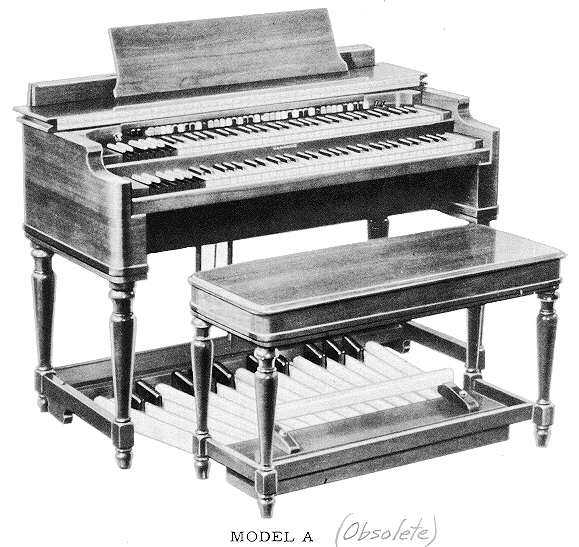 This is the original Hammond organ, produced between June 1935 and October 1938 with a price of US $ 2600,- . It has the same cabinet as B models, but not as deep. The users included celebrities like Henry Ford and George Gershwin. At about 2500 were made. Hammond B-3  The model B-3 was - and remains - the most popular Hammond model amongst musicians.
It was produced between January 1955 and 1974, price US $ 1250,- in 1955 and US $ 1175,- in 1967 (including a PR40 tone cabinet). It is the archetype and equipped with Hammond chorus/vibrato providing 3 levels of chorus and vibrato, selectable for each manual independently. It is also equipped with Hammond Percussion. Main feature: its spindly legs and classic Hammond sounds. Users: from Gregg Allman, Brian Auger, Keith Emerson, Peter Bardens and Jon Lord to Gregg Rolie, Jimmy Smith and Joe Zawinul. Hammond C3  Produced between January 1955 and 1974, price US $ 1123,- (walnut finish and PR40 tone cabinet) in 1967 and US $ 1369,- in 1972. It’s virtually identical to B3 except for more solid side and back casing and it has percussion. “Take a B-3's guts and put it in the C type church model case”. Hammond A-100 Produced between September 1959 and 1965, price US $ 950,- in 1967 and US $ 1426 in 1972. It was the first with built-in amp and speakers and users were Keith Emerson, Georgie Fame and Richard Sinclair (Caravan) Hammond L-100 Produced between 1961 and 1972, price in US $ 525,- in 1967 and US $ 737,- in 1972 (it is the cheapest tone wheel Hammond organ). Main features: spinet model, built-in-amplifier and speakers, vibrato and percussion Users: from Keith Emerson, Tony Banks (his first keyboard when Genesis turned professional) and Peter Bardens to Dave Greenfield (The Stranglers), Eddie Hardin, Zoot Money and Dave Stewart (Egg and National Health) Hammond M-100 Produced between August 1961 and 1968, price US $ 630,- Very similar to L-100 but marginally bigger, an extra speaker and 24 extra control tabs including 6 presets (M100A had extra percussion features and pedal sustain). Users: from Don Airey and Matthew Fisher (Procol Harum) to Patrick Moraz, Jon Lord, Alan Price (I Put The Spell On You by CCR) and Stevie Winwood.  See you in part 2
|
Replies:
Posted By: Chicapah
Date Posted: November 20 2007 at 14:19
|
Great work, Erik! ------------- "Literature is well enough, as a time-passer, and for the improvement and general elevation and purification of mankind, but it has no practical value" - Mark Twain |
Posted By: glass house
Date Posted: November 20 2007 at 15:32
|
Great reading and work, Erik and Pierre-Olivier!! |
Posted By: erik neuteboom
Date Posted: November 20 2007 at 16:02
|
Thanks Chicapah and Glasshouse and indeed, a big hand
for my Canadian friend Pierre-Olivier and I would like to thank
fellow Dutchman Angelo for scanning my Hammond pictures
|
Posted By: jimmy_row
Date Posted: November 20 2007 at 18:40
|
Very nice, perhaps this could be published in the database for visitors to read as well ------------- Signature Writers Guild on strike |
Posted By: pierreolivier
Date Posted: November 20 2007 at 22:31
|
Thank you very much glasshouse for the good words. A big thanks for Erik for thinking of me to write that part and to have the idea of that special.
It was a pleasure to be part of that and write about a loved instrument that been part of my life since my childhood.
|
Posted By: erik neuteboom
Date Posted: November 21 2007 at 09:27
|
Thanks Jimmy and Pierre-Olivier
will publish Part Two, embellished with some nice pictures.
|
Posted By: Rivertree
Date Posted: November 21 2007 at 09:48
Awesome, Erik  interesting contribution, pierreolivier never saw a leslie speaker animation before ... ------------- https://awesomeprog.com/users/Rivertree" rel="nofollow">  |
Posted By: erik neuteboom
Date Posted: November 21 2007 at 09:57
|
Vielen Dank, Uwe
I am very glad with all your positive reactions, at some moments it was a hell of a job to finish this article but on the other hand it was great fun because I had to play a lot of exciting Hammond drenched CD's I hadn't heard for many years. I am also very pleased with the many 'Hammond friendly' recommendations I received in my Hammond thread, you will read about it the forthcoming days in this new Hammond Extravaganza thread.
|
Posted By: Easy Money
Date Posted: November 21 2007 at 10:21
| Looks good Erik, looking forward to the rest. |
Posted By: erik neuteboom
Date Posted: November 21 2007 at 10:48
|
Thanks Easy Money, you will be there too
|
Posted By: erik neuteboom
Date Posted: November 21 2007 at 11:07
|
THE HAMMOND ORGAN “From a poor man’s pipe organ to a progrock musician's big band”
PART TWO Chapter 5: My personal Hammond story: a meeting with my hero Thijs Van Leer Chapter 6: ‘Hammond Heroes’: pioneers, masters and specialists on the Hammond organ Chapter 7: 1967-2007 Fourty years of Hammond sounds in progressive rock CHAPTER 5: MY PERSONAL HAMMOND STORY: A MEETING WITH MY HERO THIJS VAN LEER Like so many progheads in the mid-Seventies I was excited about Dutch progrock band Focus. Although a lot of praise went to the capricious guitar talent Jan Akkerman but my man was the versatile Thijs Van Leer with his vituosic organ play, his swirling work on the flute traverse and of course his unique, quite cheerful sounding ‘yodeling’. I read all about Focus in the music magazines and I watched them on TV, including the footage from BBC’s The Old Grey Whistle Test with the legendary Focus At The Rainbow concert in 1972. Focus was ‘hot’ and within a few years this Dutch four-piece band turned into a worldwide praised progrock band, from the USA to Japan!  The years went by, I had become a symphomaniac and started writing for seveal small (prog)rock magazines from the early Nineties. A few years later I decided to make a vintage keyboard special for a Dutch progrock magazine, my ultimate wish was to let the known Dutch keyboards players like Rick Van Der Linden, Ton Scherpenzeel and of course Thijs Van Leer talk about those vintage keyboards in my special. I succeeded to get the phone number of Thijs Van Leer, thanks to Arjen Lucassen (Ayreon) because I had interviewed him two times and I knew that Thijs Van Leer had played on his 2-CD The Electric Castle. So I tried to contact Thijs but every time his poshy ex-wife told me he was not at home. One day I came home from my late shift and my wife said to me words I will never forget: “Erik, Thijs Van Leer was on the phone, he asked you to call him back later this evening.” Well, I was absolutely excited because I realised that I was allowed to ask my childhood hero a few questions. I phoned Thijs and we had a nice conversation about Focus, his keyboards and his plans for a new Focus line-up. Thijs was very pleasant and willing to talk for a while, at least an hour! But this is not the end of this story because a few years ago a friend invited me to visit a music festival near his home Arnhem where Focus was on the bill. That day we visited the festival many hours before it began, the area was almost empty and we walked around a little bit. Suddenly a small white van approached us, the driver turned out to be Thijs Van Leer and he asked us to give him a hand to carry his Hammond organ... “Sure Mister Van Leer, we will” we said, proud and thrilled we helped him to carry his heavy Hammond organ to the stage, like we were his roadies! On stage we had a chat, he was very friendly and when I told him about our interview on the phone many years ago, he said he remembered that interview because it was “such a nice specialized magazine”. During the festival concert in Arnhem, I watched my childhood hero Thijs Van Leer, playing the organ, the flute traverse and doing his ‘yodeling’, like in the early Seventies, full circle!
 CHAPTER 6: THE MASTERS ON THE HAMMOND ORGAN In this chapter I have decided not to include the names of legendary keyboard-wizards like Keith Emerson, Rick Wakeman, Patrick Moraz, Jon Lord, Eddie Jobson, Tony Banks or the late Peter Bardens and Rick van der Linden but to put the focus on names that you don’t find very often on Prog Archives. JIMMY SMITH: Intro: In Keith Emerson his autobiographical book entitled Pictures Of An Exhibitionist he tells that for a long time his idea about the organ was that “the only place was in a church or for entertainement at seaside bingo halls”. But after listening to the pioneering and pivotal Hammond organ player Jimmy Smith he changed his mind and started to save money for an organ by doing several jobs. http://www.last.fm/music/Jimmy+Smith">
 Jimmy Smith is one of the most legendary and most exciting players on the Hammond organ. He was born in 1925 in Pennsylvania (USA), at the age of 9 he won an amateur contest. First he took the bass, then the piano and eventually the Hammond organ in 1953. Jimmy founded a trio (that briefly included other famous musician John Coltrane), he earned a contract with the known label Blue note and gradually Jimmy became a sensation with his powerful sound and as 'bebop' described style. He played with Art Blakey and guitarists Kenny Burrel and Wes Montgomery and in The Sixties he put more of his blues roots into his music. Jimmy Smith became an icon for famous musicians like Georgie Fame, Brian Auger, Graham Bond and Jimmy McGriff, another wizard on the Hammond organ! In the Seventies Jimmy opened his own nightclub but later he started touring again, from Europe to Japan. Recently I bought the DVD Funk In The Keys, it is a registration of a concert at the Florida Keys Islamorada’s Festival By The Bay in 1999. We can enjoy Jimmy (74 years old!) playing lots of very quick runs and delivering a varied sound, one of the trademarks of the Hammond organ because of the drawbars that enable you to create almost endless sounds! To me the often swinging music mainly sounds as jazzy inspired, like the sound of the skilled guitarist who plays some very strong solos. The final song Trophhic contains a Latin-Amercian atmosphere (that reminds me of the rhythm in La Bamba) featuring outstanding flute work and a mindblowing improvisation by Jimmy Smith that fits perfect to the Latin-American rhythm, this man is a Hammond organ! MARK STEIN  In the New York era Mark Stein (organ and lead vocals) and Tim Bogert (bass guitar) played in a band called Rick Martin & The Snowmen. They were so impressed by the sound of THE RASCALS (swinging and floods of organ) that they dediced to form their own band with Vinnie Martell on guitar and Rick Martin’s drummer Joey Brennan. They named themselves The PIGEONS but, after the replacement of Joey Brennan by Carmine Appice, the new name became VANILLA FUDGE. After five LP's VANILLA FUDGE decided to split up and to look for other musical challenges. VANILLA FUDGE’s sound is a captivating and exciting blend of soul, blues, rock and progrock with strong hints from JIMI HENDRIX (fiery electric guitar) and THE RASCALS (floods of Hammond B3 organ). The best way to get an impression of the dynamic and alternating VANILLA FUDGE sound is the compilation-CD "Psychedelic Sundae (the best of..)": some Rhythm & blues with soul/gospel-like vocals and vocal harmonies but mainly music that is based upon great interplay between the fierce electric guitar (like JIMI HENDRIX) and the powerful Hammond B3 organ. The compositions range from slow, almost hypnotizing to propulsive with heavy outbursts. The vocals sound soulful, a rather unusual combination in progrock. Discover this captivating, very progressive blend of different styles and keep in mind that YES, DEEP PURPLE and URIAH HEEP pointed at VANILLA FUDGE as their main influence! Best studio albums to start with are "Near the Beginning" and "Rock & Roll". BRIAN AUGER This highly acclaimed keyboard player (Keith Emerson called Brian Auger “the best jazz organist in the world”) was born in 1939 in India but he moved to London. There he began his musical carreer in the early Sixties in a jazz trio on piano. Then he started his musical adventures, he founded the bands Trinity, Steampackett and Oblivion Express and during the years he played with John McLaughlin, Jimmy Page, Rod Stewart and with Eric Burdon he toured between 1990 and 1994. A year later he founded a new Oblivion Express formation, the line-up included his daughters Savannah on vocals and Karma on drums and he is still touring with his band. I own a video with a 1989 concert at a jazz festival, it contains lots of exciting solos by Brian Auger, showing why is generally considered as one of the ultimate masters on the Hammond organ! At this moment I am collecting information in order to buy albums from Brian Auger, here are some quotes by fellow collaborators about Brian Auger his Hammond work on a few canditates for my collection:  BRIAN AUGER — LIVE OBLIVION Volume 2
Review by Easy Money “This is 70s jazz fusion with the emphasis on fun RnB and rock songs without sacrificing any artistic integrity. This is a live album and it is bursting with the kind of energy that only comes with live performances. Brian's solos on B3 and Fender Rhodes all have the pure analogue sound of their time.” “Brian Auger and his band are definitley drawing from 60s RnB/jazz bands such as Les McCann and Ramsey Lewis on this album, but Auger's music hits a little harder because you can also hear the influence of 70s rockers such as Santana and Deep Purple.“ BRIAN AUGER — Closer To It! Review by Chicapah (Rollie Anderson) “Santana’s incredible “Caravanserai” LP had sent serious shock waves reverberating through the fusion world and Brian, no doubt, was captivated by its spell. Therefore, the conga-laden, “traveling” feel of the intro to “Whenever You’re Ready” pays unashamed homage to that spectacular group of California musicians while laying the foundation for the rest of the album. After experimenting with R&B screamer Ligertwood on the previous LP (with mixed results) it seems that Auger took a more relaxed attitude towards his own limited singing chops and decided his tone would work just fine if they buried the vocal down in the mix a tad. The approach works and it turns out to not be much of a detriment at all. His Hammond sound on this number is brisk and fresh and it becomes evident that this style of music fits Brian quite well.” BRIAN AUGER — Streetnoise Review by Chicapah (Rollie Anderson) “Tropic of Capricorn” is a very jazzy tune written by Brian “Auge” Auger that demonstrates right off the bat one of the main reasons to love this band. The Hammond organ. Brian is a monster and the fire he ignites every time he takes a ride is quite evident on this number.” “As I mentioned earlier, their cover of The Doors’ “Light My Fire” is what got me started on Auger’s work and when you hear it you’ll understand why. After hearing what Jose Feliciano had done to the song they decided to make it even jazzier and expressive and the result is nothing short of genius. Julie’s erotic and near-orgasmic delivery takes your breath away as she makes the tune her own and Brian’s sensuous organ lead is a treat, as well. This track is the highlight of the album and singularly worth the price of admission.“ “If you haven’t come to admire Driscoll’s artistry by now, her stunning performance on “When I Was a Young Girl” has got to be the clincher. It’s a haunting vocal and organ piece that slowly builds to an amazingly emotional crescendo and I guarantee you’ll never forget Julie’s gut-wrenching wails that take her voice flying into the highest registers imaginable. Brian’s “Ellis Island” (an instrumental inspired by Don Ellis) starts with a typical 60s-styled clavinet riff but then gets hotter than Hades as the tight rhythm section of Thacker and Ambrose glide underneath Auger’s jet-fueled, screaming organ ride.” “If you are a fan of the Hammond sound then you can’t afford to overlook this album. Auger’s organ lead will curl your hair and, if you stand too close to the speakers, it might set your clothes ablaze.” “And NOBODY, including Emerson, Wakeman and Lord, had the ability to attack the Hammond keyboard with more intensity and blazing passion than Brian Auger. He proves it beyond any shadow of a doubt here.” EDDIE HARDIN After Steve Winwood left The Spencer Davis Group to found Traffic, he was replaced by Eddie Hardin. He turned out to be a real master on the Hammond organ, just listen to the live CD Catch You On The Rebop, Live 1973, Eddie Hardin delivers a wide range of Hammond sounds and sensational solos. Later he formed a new band with the Spencer Davis Group drummer Peter York, the press hailed their music and named the duo “the smallest big band in the world”. Recommended: their live CD Live In The ’70, the duo on their pinnacle. MATTHEW FISHER 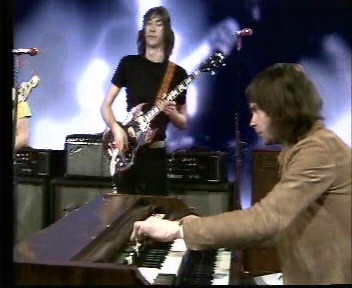 - Halfway The Sixties Gary Brooker and Keith Reid decided to write songs for other artists. Unfortunately for these young musicians this didn’t work out and in 1967 they founded a band to perform these songs by themselves. Gary recruited Robin Trower on guitar, Dave Knights on bass and B.J. Wilson on drums. But he also wanted an organ player to sound more sophisticated, inspired by the gospel and rhythm & blues music from the USA. Through an advertisement in the known British music magazine Melody Maker they found Hammond organ player Matthew Fisher. He liked the songs very much and immediately joined the brandnew band named Procol Harum, derived from the name of a cat! In 1967 Procol Harum stunned the musical world with their eponymous debut LP and th eomnipresent Hammond sound, it turned out to be very pivotal and soon lots of Procol Harum inspired bands emerged in the late Sixties and eary Seventies (see Chapter 7). On the Repertoire reissue CD of the LP Procol Harum entitled A Whiter Shade Of Pale you can listen to the amazing progressive sound by Procol Harum. This reissue also contains the single A Whiter Shade Of Pale (released before the album was recorded), because of idealistic reasons it was not on the original LP release (the band didn’t want the public to pay two times for this timeless composition!). And it also contains four bonustracks Lime Street Blues (this turns out to be pure rock and roll with powerful guitar and floods of Hammond), the single Homburg (slow rhythm with majestic Grand piano, melancholical vocals and a churchy organ sound), Monsieur Armand (catchy rhythm, lush organ and fiery guitar) and Seems To Have The Blues All The Time (bluesy vocals, a powerful Hammond solo and again a fiery guitar solo). About the original LP, after the wonderful Hammond drenched single A Whiter Shade Of Pale (based on Bach’s Air On The G String) the band presented mature, adventurous and varied compositions: warm vocals, strong duo-keyboards (piano/organ) and a short but swirling Hammond solo in the quite melancholical Conquistador, a bluesy climate in Something Following Me (powerful guitar solo) and Cerdes (swelling Hammond sound), a swinging rhythm in Kaleidoscope (excellent Hammond sounds) and Lime Street Blues (boogie woogie piano) and funny atmospheres in the short Mabel and Good Captain Clack. But the magnum opus on the debut album is the instrumental piece Repent Walpurgis, written by Matthew Fisher: first a slow rhythm with soaring Hammond and tender piano, then a sensitive guitar solo and warm piano arpeggio’s and finally wonderful interplay between a sparkling piano, lush organ waves and howling electric guitar, goose bumps! GREGG ROLIE During a jam session late ’66 Greg Rolie and Carlos Santana met and because of the chemistry they decide to found The Santana Blues Band, Greg gives up his job as a dish washer. Their blend of rock, jazz and blues with latin percussion sound sensational and without making an album, the band (soon simply named Santana) is invited to perform on the legendary Woodstock Festival in 1969. During the epic Soul Sacrifice Greg plays an outstanding solo on the Hammond organ, one of the highights of that festival in my opinion! A few years ago a Santana CD entitled Live At The Filmore ’68 was released, it contains lots of great work on the Hammond organ by Greg Rolie. In 1970 Santana performed at The Family Dog in San Fransisco (along with The Grateful Dead and Jefferson Airplane), during the compositions Incident At Neshabur and Soul Sacrifice (hot percussion!) Gregg Rolie delivers two strongly build-up solos although the camera crew has difficulties to find Greg because the stage hosts so many musicians! This footage is now on DVD. CHESTER THOMPSON: Another man in Carlos Santana his band (after Gregg Rolie and Tom Coster) who was a master on the Hammond organ, two interesting DVD’s featuring Chester Thompson are: SANTANA – Live In Concert (Loreley in Germany 1998) We can enjoy lots of sensitive, fiery and biting (wah-wah) guitar soli and Chester Thompson is outstanding on the Hammond organ, what a swirling soli in Day Of Celebration and One Fine Morning and in Savor he freaks out during a great build-up solo, how exciting! SANTANA – Sacred Fire This is the best Mexican party you can attend, Carlos Santana playing a home game (recorded in Mexico City, 1993)! From the very first second on this DVD Carlos and his outstanding band blow you away: a super-inspired ‘Sustain Santana’ with lots of moving, often howling guitar soli, hot Afro-Cuban percussion play on conga’s and timbales, strong vocalists and keyboard player Chester Thompson who delivers great work on the Hammond organ. DAVE GREENSLADE Dave Greenslade played in Colosseum, one of the pivotal progressive bands that emerged in the second part of the Sixties. In ’68 the founding members were drummer Jon Hiseman, saxophone player Dick Heckstall-Smith and bass player Tony Reeves, later joined by Dave Greenslade (keyboards), Dave Clempson (guitar), Chris Farlowe (vocals) and Mark Clark, he replaced Tony Reeves. Colosseum made three studio albums: "Those Who Are To Die We Salute You" and "Valentyne Suite" (both from ’69) and "Daughter Of Time" (’70). The music is a progressive mix of several styles (rock, jazz, blues) with lots of sensational solos and captivating interplay. In ’91 the label Castle Communications released the comprehensive compilation CD entitled "The Time Machine". It’s a good impression of Colosseum their varied sound: catchy and swinging with strong vocals, raw guitarwork, lots of saxophone and floods of Hammond organ in Walking In The Park and Those About To Die, bluesy in Theme For An Imaginary Western and Butty’s Blues, flute in The Machine Demands A Sacrifice and vibraphone in Rope Ladder To The Moon. The final two tracks are live: lots of jazzy saxophone in Tanglewood ’63 and an impressive and powerful drum solo in The Time Machine. But the absolute highlight on this CD is the epic titletrack of their second album entitled The Valentyne Suite (almost 17 minutes). It starts with a fluent rhythm delivering strong work on organ, saxophone and vibraphone, then a wonderful mellow part with Grand piano and wailing saxophone. Next we can enjoy a churchy Hammond organ sound and powerful bass runs, culminating in a swinging rhythm with swirling Hammond organ, jazzy saxophone and a propulsive rhythm-section, very exicting and the interplay between the musicians is outstanding! The rhythm slows down and Dave Greenslade delivers a Hammond solo with a kind of wah-wah sound, spectacular. After a bass solo the guitarist plays a long, bluesy oriented solo with wah-wah. The final part has a very dynamic atmosphere with great interplay between organ, sax, guitar and the rhythm-section, Colosseum at their best! After the demise of Colosseum in ‘71, keyboardplayer Dave Greenslade founded his own band Greenslade, featuring Tony Reeves (bass), Dave Lawson (keyboards, clarinet, flute) and Andrew McCulloch (drums), he had left King Crimson. In ’73 Greenslade released “Bedside manner are extra”, in my opinion their masterwork. It’s an an excellent blend of classic, jazz, rock, blues and symphonic rock with elaborate compositions and inventive and exciting dual-keyboardplay by Greenslade and Lawson. Highlight is the splendid build-up track “Drum folk” featuring halfway a short drumsolo and some Mellotron, the climax is a bluesy, very moving Hammond organ solo, goose bumps! BARBARA DENNERLEIN  Yet despite all this enthusiasm, scarcely anyone truly believed that this young lady would become Germany's most important and successful jazz export, acclaimed and respected by critics and the public alike on both sides of the Atlantic. In the "Critics' Poll" organised by the renowned American jazz magazine DownBeat she has been among the leaders year after year. In 1998 she took first prize for the fifth time in the "TDWR organ" category; in 1995, for the third time, she carried off the "German Record Critics Award, on this occasion for her Verve debut album Take Off. In the same year this successful CD was honoured twice with the "Jazz Award" and, after holding the Number One position in the German Jazz Charts for several months, proved to be the best-selling jazz album of 1995. An international success that was even outdone with her follow-up albums Junkanoo and Outhipped. Above all, she is one of the very few organists who play a pedal bass, and is surely unequalled for her breathtaking technique."The pedals are absolutely crucial for my way of playing the Hammond organ. They enable me to create a very special rhythmic structure which cannot be easily imitated by the double-bass, since together with the two manuals I have a kind of "rhythmic triptych" at my disposal," explains Barbara Dennerlein. In order to get an impression of this acclaimed Hammond organ player I bought the CD compilation The Best Of Barbara Dennerlein. Well, I am absolutely delighted about her because she combines great skills and emotion, from powerful jazzy sounding runs to moving bluesy inspired waves, check out this lady! REESE WYNANS This was Stevie Ray Vaughan his outstanding man on the keyboards in his band Double Trouble, he often used the Hammond B3 organ. On the 2-DVD Live At Montreux you can watch his skills on the second disc entitled Live At Montreux 1985: exciting support to Stevie his fiery and biting solos and groovy guitar riffs with tidal waves and swirling runs, from Soul To Soul and Mary Had A Little Lamb to Texas Flood! CHAPTER 7: 1967-2007 FOURTY YEARS OF HAMMOND SOUNDS IN PROGRESSIVE ROCK a) The Hammond organ embraced by the Progressive Rock keyboard players My starting point for this special is the year 1967 when Procol Harum and Vanilla Fudge released their eponymous debut albums, loaded with the distinctive and powerful sound of the Hammond organ. In the same year The Nice featuring keyboard-wizard Keith Emerson on his Hammond organ stunned the audience, Keith was soon named “the Jimi Hendrix of the progressive rock”. He got this nickname not only because of his adventurous and creative use but also because of his infamous abuse like stabbing with knives and jumping on it! From his autobiograpy Pictures Of An Exhibitionist: “Together with his father Keith intended to buy a Bird organ but in the Portsmouth Organ Centre his father hesitated, then the salesman proposed to play on a Hammond organ. Keith says “And there it was, resplendent in beautiful shining mahogany: the Hammond L1 00 electric organ! I playes on it. That was the sound! My father agreed (“you’ve got to have it, it’s a far more superior instrument”).”  Inspired by the Hammond drenched sound of The Nice and Procol Harum soon many bands frequently used the Hammond organ between the late Sixties and the early Seventies like Yes, Genesis, Gentle Giant, Caravan, Van Der Graaf Generator, Jethro Tull, Camel and Barclay James Harvest. Most keyboard players were classically trained and their influence on the music of the progrock compositions in those days was siginificant with some awesome examples of work on the Hammond organ: Rick Wakeman his solo during Roundabout and his church organ sound halfway Close To The Edge, Tony Banks his psychedelic solo during in Supper’s Ready, his majestic sound in The Musical Box and his interplay with the Mellotron during the intro of Watcher Of The Skies, Peter Bardens during his exciting solo in Lady Fantasy, Rick Wright on Pink Floyd At Pompeii and Animals and Keith Emerson on Pictures At An Exhibtion.
In his book Rocking The Classic the author Edward Macan explains that the Anglo-Saxon church tradition played an important role because many musicians grew up with the sound of the church organ and the choir. During the progrock concerts in the late Sixties and early Seventies Edward considers the atmosphere as almost religious ceremonial happenings with the Hammond organ as a substitute for the pipe organ. In the UK you can trace that huge influence not only in the music of the legendary progrock formations like Yes, Genesis and ELP but also in bands like Bram Stoker, Beggar’s Opera, Fantasy, Fruupp, Fuzzy Duck, Gracious, Greenslade, Rare Bird and Refugee (featuring the ‘Swiss Poodle’ Patrick Moraz). In many music books about the Seventies these bands are named as a part of The Early British Progressive Rock Movement. In the late Sixties and early Seventies countless progrock bands emerged in Italy, often inspired by ELP, Yes, King Crimson and Genesis but also Jethro Tull and VDGG. It was a very florishing music scene that delivered lots of excellent and varied sounding bands with an important role for the Hammond organ like Banco (their early albums), Formula Tre (Sognando E Risognando), Le Orme (Collage), Alphataurus (album Alphataurus),Gli Alluminogeni (Scolopendra), Anology (album Anaolgy), Il Balletto Di Bronzo (Ys), Cherry Five (album Cherry Five), Metamorfosi (E Fu Il Geste Giorno and Inferno), Murple Io Sono Murple), Museo Rosenbach (Zarathustra), New Trolls (I love the 2-LP Searching For A Land), Nuova Idea (Clowns), Panna Freda (Uno), Reale Accademia Di Musical (RAM), Rovescio Della Medaglia (Contaminazione), Rustichelli & Bordini (Opera Prima), Triade (La Storia Di Sabazio) and The Trip (The Trip and especially Atlantide). Denmark delivers the exciting Hammond drenched sound by Ache on their two albums De Homine Urbano (1970) and Green Man (1971), keyboardplayer Peter Mellin is a real Hammond wizard (see Chapter 10)!
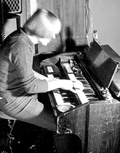 From the early Seventies the Japanese progrock delivered lots of interesting, often ELP and UK inspired bands with a prominent role for the Hammond organ with as the most obvious examples Cosmos Factory (album An Old Castle Of Transylvania), Social Tension (‘the second coming of ELP’), Gerard (especially as a trio in the Nineties), Outer Limits (album The Scene Of Pale Blue), Deja Vu and later Ars Nova
In the Eighties the neo-progrock ruled, speerheaded by Marillion, and remarkably is the omnipresence of (mainly digital) synthesizers, it seems that the Hammond organ was not very popular among the keyboard players of this category. But then in the early Nineties we could enjoy the Skandinavian Progrock Revival, bands that were firmly rooted into the Seventies sound of the symphonic progrock dinosaurs and that made lavishly use of the Hammond organ like Anglagard, White Willow, Atlas, Manticore, Sinkadus and Zello. And in the USA the new band Spock’s Beard also sounded very retro with lots of vintage keyboards. On the video Lie At The Whiskey the Japanese keyboard player freaks out on his Hammond organ! In the USA another band hailed the Hammond organ, their name Niacin is even a ‘hidden tribute’ because it means Vitamin B3! And how about the amount of Hammond organ in the current progrock scene?
Well, I would like to recommend some bands I discovered this last decade, first a trip to Argentina with Nexus. The music on their studio-albums albums Detras Del Umbral, Metanoia and especially Perpetuum Karma is rooted in the Seventies symphonic rock sound with obvious echoes from Keith Emerson his Hammond and Moog sound in early ELP. Their keyboardplayer Lalo Huber was willing to tell me about his passion: “ My first musical encounter with the Hammond organ sound was in the Seventies when I accidentally listened to Blues Variations in a neighbours' house. At that time I was just a school boy and played electric guitar. But after listening to Emerson's roaring Hammond sound in Blues Variations I immediately changed my guitar for the keyboards!
I had fallen in love with the Hammond and vintage synthesizers like the Moog and with progressive rock too, all at the same time! My love for the Hammond continued to grow while listening to Rick Wakeman, Eddie Jobson, Steve Walsh and Jon Lord. These keyboard players are my key influences... together with Hammond pioneer Jimmy Smith of course, the man who "invented" the Hammond tricks and modern sounds! My favourite albums with Hammond sounds are, almost obviously, Pictures at an exhibition, Tarkus, Brain Salad Surgery and Trilogy by ELP and The six wives... by Rick Wakeman. My own style is aggressive, I like to use overdrive and I almost break the organs in my live performances. I have even left blood on the keys in live performances... due to very fast and energetic "glissandos"! These are of course influences from the master Keith Emerson, and also Jon Lord. Sometimes I like to think and feel the Hammond as a wild animal, an animal with a lot of power that you have to control. It's interesting how an instrument that was meant as a low cost replacement for church organs ended up as a jazz and progressive rock icon! I believe the Hammond is a key part of the essence of progressive rock and I work everyday to understand it better and better.” Finally to Italy with two interesting bands.
Areknames: This is an Italian band featuring Michele Epifani (keyboards, guitars and vocals) as the musical brainchild. On their eponymous debut-CD we can enjoy pleasant progrock that frequently alternates from mellow or compelling to sumptuous delivering a lush organ sound and melancholic vocals. In general the compositions are based upon creating early Seventies symphonic and psychedelic landscapes with analogue keyboards like the Hammond – and Farfisa organ, Mellotron and Fender Rhodes electric piano. The electric guitarwork is sensitive and in combination with the lush organ sound a very compelling element. The information booklet mentions many bands that were an inspiration, in my opinion VDGG, early PINK FLOYD, ATOMIC ROOSTER and IL BALLETTO DI BRONZO were the main sources.  Just released: Areknames Live, what a stunning live album with an omnipresent, often compelling Hammond organ sound, from powerful runs and swirling solos to sumptuous eruptions and psychedelic sounds, goose bumps and highly recommended! Wicked Minds: This new Italian band Wicked Minds is a ‘musical time-machine’ that brings you back to the heavy progressive sound of the exciting Seventies era: a Hammond organ (lots of swirling soli) and fiery and biting (often wah-wah) guitar drenched sound and David Byron like vocals in simple but very catchy and compelling songs that will appeal to fans of mainly Uriah Heep but also Deep Purple, Atomic Rooster and even Jimi Hendrix. You can get a good impression of their exciting music on the CD/DVD set entitled Witchflower (including videos and concerts in Italy and Belgium) and the album Live At Burg Herzberg Festival 2006. b) The important role of the Hammond organ in the Seventies Heavy Progressive Rock In the very early Seventies many bands emerged that combined a powerful Hammond organ sound with harder-edged guitarwork. This delivered exciting and dynamic music with a lot of tension between the approach of JS Bach inspired keyboard players and Jimi Hendrix oriented guitarists, supported by powerhouse rhythm-sections and good singers. This movement was named The Heavy Progressive Rock and speerheaded by Deep Purple and Uriah Heep. Their live albums Made In Japan and Live are true their masterpieces, loaded with excellent work on the Hammond organ by Jon Lord and Ken Hensley. In the slipstream of Deep Purple and Uriah Heep followed bands like Quatermass, Black Widow, Mainhorse (with great work by Patrick Moraz) and .... Atomic Rooster, known as the band that hosted Carl Palmer before he founded the trio Emerson, Lake & Palmer. But after Carl his departure, Atomic Rooster started to sound more and more interesting, thanks to guitarist and vocalist John DuCann who joined the band in 1970. Immediately he went on tour with the band. When bass player Graham left the band keyboardist Crane refused to replace him and started playing bass lines on the lower part of Hammond organ. To compensate the fact that he couldn't use his left hand to press down chords on the lower manual he created a 'burning' style of playing, often in furious interplay with DuCann. When Carl Palmer left Atomic Rooster to join Keith Emerson and Greg Lake left for supergroup ELP Rick Parnell shortly replaced him. John and Vincent were not satisfied about his skills and had to replace him by Paul Hammond, an extremely good drummer from a local band called Farm. Soon the trio started to develop their influential 'heavy progressive' sound: hard edged progressive music with a swirling Hammond B3 organ and fiery guitarplay. The interplay between John's guitar and Vince organ is hot and often furious. In fact this powerful sound was the precursor to 'progressive metal', many metal- acts from The Eighties pointed at Atomic Rooster as their main source. In '89 it was all over for Atomic Rooster because of Crane's tragical death, he commited suicide. On the great compilation album The First 10 Explosive Years (my favorite Atomic Rooster CD) you will be blown away by the dynamic sound, loaded with short but magnificent soli on guitar and organ, energetic drums and powerful vocals.  |
Posted By: Nightfly
Date Posted: November 21 2007 at 11:19
|
Wow! Fantastic work Erik and very interesting reading. I especially enjoyed your story of your meeting with Thijs Van Leer. I also admire Dave Greenslade and a big fan of Bedside Manners are Extra. I agree it's the best Greenslade album.
I was lucky enough to see Colosseum live twice in the last 10 years and would not hesitate to go and see them again.
|
Posted By: erik neuteboom
Date Posted: November 21 2007 at 11:29
|
Thanks Paul .. but now I need a beer
|
Posted By: Nightfly
Date Posted: November 21 2007 at 11:30
|
Posted By: Chicapah
Date Posted: November 21 2007 at 12:41
|
Thank you Erik for bringing Brian Auger to the forefront where he belongs! ------------- "Literature is well enough, as a time-passer, and for the improvement and general elevation and purification of mankind, but it has no practical value" - Mark Twain |
Posted By: erik neuteboom
Date Posted: November 21 2007 at 14:31
|
Well Chicapah, thank you too (and Easy Money) for the reviews, for sure I will check out your recommendations Dick Heath PMed me yesterday that he is busy with finishing his contribution, I am looking forward to it, then I will publish Part 3.
This afternoon I enjoyed the Riverside 2-CD version of the new album Rapid Eye Movement, it has lots of Hammond sounds on it
|
Posted By: Easy Money
Date Posted: November 21 2007 at 17:22
|
Hey Erik, I like the way you focused on the lesser knowns. Certain keyboardists, talented as they may be, have already gotten plenty of attention. Also, kudos for mentioning Santana at Woodstock, rock doesn't get much better than that. |
Posted By: erik neuteboom
Date Posted: November 22 2007 at 06:57
|
Thanks Easy Money, indeed time to focus on lesser known keyboard players and about Carlos Santana on Woodstock, what a progressive sound for that time and how exciting to witness Gregg Rolie on his Hammond organ
Yesterday evening I watched the Krautrock Vol. 1 DVD, so many German bands with keyboard players that used a Hammond organ like Frumpy, Birthcontrol, Jane, Eloy and Novalis, I am looking forward to Vol. 2!
|
Posted By: Jim Garten
Date Posted: November 22 2007 at 07:40
Absolutely blinding article so far, Erik... but for one small detail: 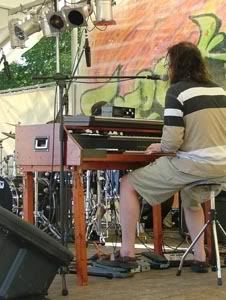 I hate to say this, but I believe that's a dual manual Korg CX3 he's playing - splendid keyboard with a warm & rich sound, but it's certainly not a Hammond (unless it's a model I'm unfamiliar with...), check out the lack of drawbars & poor quality of cabinet by comparison; also, they're not waterfall keys... ...how sad am I?  ------------- 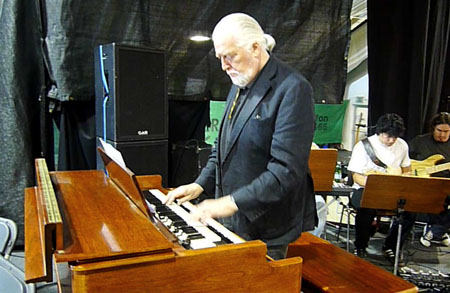 Jon Lord 1941 - 2012 |
Posted By: Jim Garten
Date Posted: November 22 2007 at 07:50
Fab performance by the then relatively unknown San Francisco band; Greg Rolie putting in a stormer & looking genuinely surprised afterward at the reaction... But if we're looking at Woodstock, don't forget Joe Cocker & The Grease Band's contribution 'With a little help from my friends'; the Hammond intro to that (Chris Stainton??  ) & soaring Leslie'd chords during the song does it for me every time ) & soaring Leslie'd chords during the song does it for me every time -------------  Jon Lord 1941 - 2012 |
Posted By: Easy Money
Date Posted: November 22 2007 at 08:18
It may be a CX3 or another Hammond copy, but CX3s have drawbars and this organ does too, you can see them near the top. Anyway, I'm glad someone else got on here with a fake Hammond. I think classic Hammond copies are all part of the lore of the Hammond. |
Posted By: Jim Garten
Date Posted: November 22 2007 at 08:40
|
When I said 'lack of' I just meant there weren't enough for a full console & they're in the wrong place for a spinet. So far as copies go though, Korg's got that sound down pat - I don't think there are any other copies around to match it... to be honest, I think the Korg has a more faithful sound than some of the later Hammond digital single manuals... or is that sacriledge??  -------------  Jon Lord 1941 - 2012 |
Posted By: erik neuteboom
Date Posted: November 22 2007 at 09:06
|
Interesting discussion fellow Hammond aficionados, especially because Easy Money came up with the Hammond copy models already a few weeks ago. A few years ago I was in a music shop and by coincidence attented a Hammond Suzuki XB3 demonstration, incredible, what a sound, so mighty close to the sound of the original Hammond B3 I hope to publish Part 3 this early evening.
|
Posted By: Easy Money
Date Posted: November 22 2007 at 10:36
I'm actually partial to the old analogue copies such as the Crumar T1 or Univox Organizer. I collect them actually. |
Posted By: erik neuteboom
Date Posted: November 22 2007 at 10:51
|
This happened during a 'hot' solo on the Hammond organ
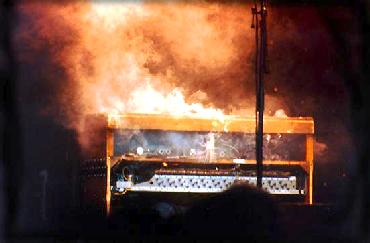 |
Posted By: Lady In Black
Date Posted: November 22 2007 at 11:08
|
Great work, Erik!
I was able only to give a swift look. But already so it seems me exceptional, like special. More than on the story I will get into focus my mind on the album and the reviews. And I should say that that part schemes myself much. ------------- It's dark... I've fear... I have strong pains... A serpent is being born... That badly I did, I? |
Posted By: Lady In Black
Date Posted: November 22 2007 at 11:13
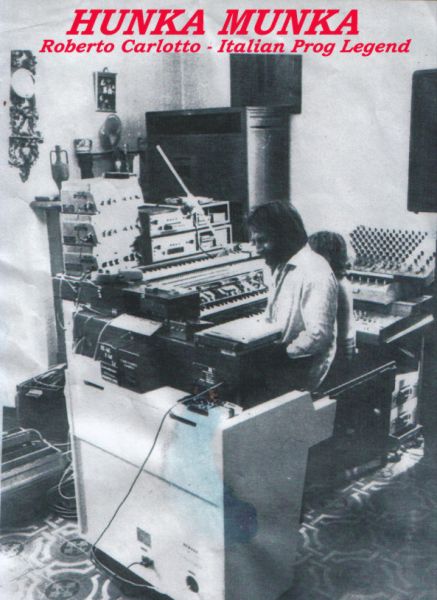 Roberto "Hunka Munka" Carlotto is the best Italian Hammond player. Carlotto use a customized version of Hammond. Important is the album "Dedicato A Giovanna G."
this is the Mandrakeroot review of:
http://www.progarchives.com/artist.asp?id=3047 -
Dedicato A Giovanna G.(Studio http://www.progarchives.com/album.asp?id=15804# - - Album , 1972)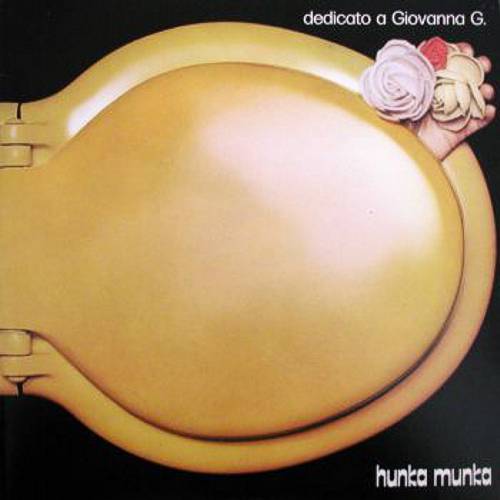 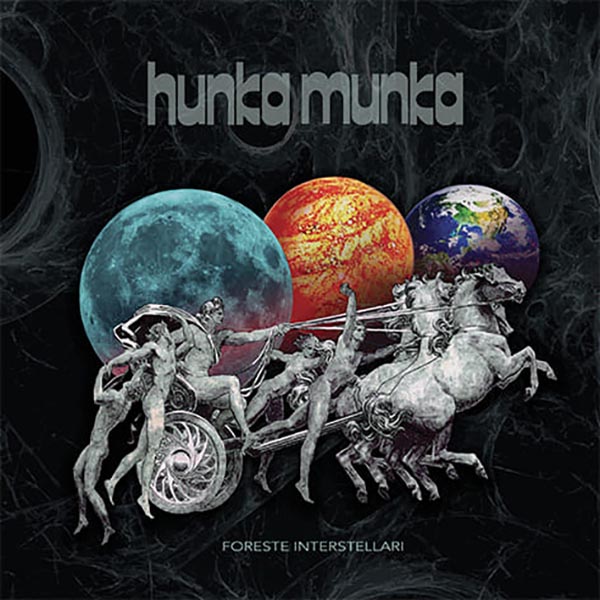 4.00
(Warning: only 1 rating) http://www.progarchives.com/album.asp?id=15804#reviews">  Review by http://www.progarchives.com/Collaborators.asp?id=7121 -
------------- It's dark... I've fear... I have strong pains... A serpent is being born... That badly I did, I? |
Posted By: erik neuteboom
Date Posted: November 22 2007 at 11:30
|
Lady In Black, nice Roberto Carlotto picture, I also notice the Mellotron M400
By the way, I know you are an Uriah Heep fan, wait and see Part 3 of this Hammond organ special!
|
Posted By: Utah Man
Date Posted: November 22 2007 at 11:52
Soft synths of course will never sound exactly like the real thing...But Erik (and others), what is your opinion of Native Instruments Hammond B4 II ? It seems to be able to reproduce the authentic hammond sound.
|
Posted By: Lady In Black
Date Posted: November 22 2007 at 13:43
Well... Hunka munka isn't my type of albums but... in a hammond special this album (and Carlotto, of course) deserve a big attention.
And yes, Uriah Heep please me but in this moment i am more fans of Renaissance or Atomic Rooster. Well... also of Mike Bloomfield, Al Kooper and Steve Stills and their one "Super Session".
 ------------- It's dark... I've fear... I have strong pains... A serpent is being born... That badly I did, I? |
Posted By: erik neuteboom
Date Posted: November 22 2007 at 13:46
|
THE HAMMOND ORGAN
“From a poor man’s pipe organ to a progrock musician's big band” PART THREE Chapter 8: Quotes about the Hammond organ by Dutch progrock musicians (from Rick Van Der Linden to Thijs van Leer
and Ton Scherpenzeel)
Chapter 9: My favorite Hammond organ drenched CD’s and DVD’s CHAPTER 8: QUOTES ABOUT THE HAMMOND ORGAN BY DUTCH PROGROCK MUSICIANS When I made a vintage keyboard special for the Dutch progrock magazine iO Pages I got in touch with many known Dutch progrock musicians, here is a compilation of their quotes about the Hammond organ from the interviews I made with them. Cleem Determeijer (Finch and Veralin): “I owned a Hammond L100 with a Leslie speaker. It was a very inspiring instrument and you got a lot of extra’s for free!” Ton Scherpenzeel (Kayak and Camel): “On the album See See The Sun from 1973 I used a Hammond organ that belonged to the studio. On stage I often played on a Hammond L100, it replaced a lot of other keyboards. Especially on the more heavy and raw parts of the music I let it scream! A Hammond is an irreplaceable and fantastic device, its charm comes from the technical imperfections like the ‘keyclick’ and the ‘buzzing’.” Thijs Van Leer (Focus): “In my Seventies days with the early Focus line-up my most important keyboard was the Hammond organ, to be more specific: the L100. It has a wonderful sound in the mid-era, a kind of soft blanket for the arrangements. On stage the part of the Hammond organ in my range of keyboards was at about 70%. In the studio sometimes I used a Hammond B3 in order to get some special effects. I also owned two Leslie speakers. For a while I used a ‘potmeter’ to handle the speed of the Leslie box a bit more.” Rick Van Der Linden (Ekseption and Trace): “My ‘Hammond heroes’ are Brian Auger from Trinity and especially Keith Emerson from The Nice (later I met him and he told me that he owned my solo albums!) and in 1969 I bought my first Hammond organ, a M4. It’s hard to describe the sound of a Hammond, it lives, you gotta feel it under your fingers, it’s the king of the keyboards. One day the M4 felt from the stairs, more than 10 meters but it still worked perfectly after that incident, amazing! Later I bought more Hammonds, including the famous B3 model. Looking at the quality it’s a bit better than the M100 but that spinet sound is so impressive for such a small model.”
Arjen Lucassen (Bodine and Vengeance, nowadays Ayreon): “I am a huge fan of the Hammond organ, it contains so many sounds and every Hammond sounds unique. My favorite models are the B3 and C3. The ‘clicks’ sound great but in fact these were factory imperfections. On my first album Cleem Determijer plays the Hammond organ, he had borrowed it from Magic Frankie, a blues musician. At this moment I own a Hammond module, the Hammond Suzuki XM1 in combination with a Leslie 122 speaker.”
CHAPTER 9: MY FAVORITE HAMMOND ORGAN DRENCHED ALBUMS ACHE — De Homine Urbano + Green Man 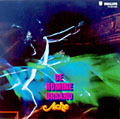 - This Danish band was founded in ’68 and made two albums: De Hombre Urbano (1970) and Green man (1971).) In 2000 both albums were released on 1 CD entitled “Ache: De Hombre Urbano + Green Man”. The music is based upon splendid keyboardplay (many floods of Hammond organ) and some fiery electric guitar. The first album contains two ‘side- long tracks’, the atmosphere is typically end Sixties and early Seventies (the Early British Progressive Rock Movement like JULIAN’S TREATMENT, RARE BIRD, BEGGAR’S OPERA and ATOMIC ROOSTER, the German Krautrock like early JANE, ELOY, RAMSES and TRIUMVIRAT) and early Earth & Fire) with lots of soli and long, exciting interplay between guitar and keyoards, like jams. The second album includes shorter songs but the climates are in the vein of the first LP. If you listen to this CD, it’s incredible that the magnificent keyboardplay is delivered by an unknown Danish musician.
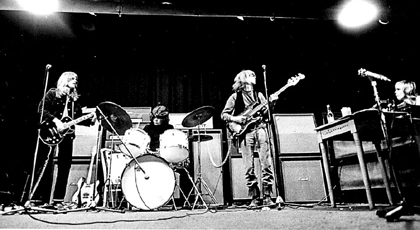 Essential for Hammond organ freaks! GLI ALLUMINOGENI — Scolopendra - Here's an often overlooked gem from the Italian Seventies prog! The seven compositions on this debut album are a very dynamic and alternating blend of Sixties, blues, rock and classical featuring excellent work on the Hammond organ and also great Italian vocals and raw electric guitar. The one moment you are carried away by bombastic a church organ sound, the other there is a bluesy electric guitar or pleasant and warm Sixties atmosphere, VERY EXCITING! AVE ROCK - Ave Rock - This is a Seventies progrock band from Brazil. Although Ave Rock their second album sounds more progressive and more mature, I prefer their eponymous debut LP. The Hammond organ play is wonderful featuring many hugh floods and great runs, the guitar play is decent and the compositions are tasteful but not very original (evoking the organ-based progrock bands from the late-Sixties and early Seventies). Only the vocals doesn't please me, they tend too sound a bit unbalanced and at some moments too high pitched. My conclusion: a pleasant album for the Hammond aficionados. BRAM STOKER — Schizo-Poltergeist - Here is a gem from the Early British Progressive Rock Movement. The eight melodic and dynamic compositions are Hammond organ drenched, the electric guitar is often distorted (fuzz) delivering some fiery soli but in general it is on the background. Bram Stoker their sound has elements from Atomic Rooster (Born to be free), ELP (Fast decay) and often Beggar's Opera, mainly due to the classical organ sound (for example Bach's Toccata In D-Fuga in Fast Decay and the long Fingal's Cave) and the pleasant vocals. The track Blitz has some Spanish flavored guitar undertones and sounds a bit dark. The final, horror-like song Poltergeist features floods of classical inspired organ. If you like Hammond drenched seventies progrock, I highly recommended this CD! BEGGAR'S OPERA — Act One - What a mindblowing debut-album this is! The very melodic and harmonic music from this five-piece band is based upon an incredible dynamic and propulsive rhythm-section and splendid, very exciting Hammond organ work, often accompanied by a powerful and fiery electric guitar. The interplay between the musicians is magnificent and the excertions on keyboards and guitar are very compelling, in the spirit of the late Sixties and early Seventies. The vocals are also worth to be mentioned: distinctive with an enthusiastic approach and often a bit cynical undertone but at some moments also warm and plesant. The highlight on this CD is the track "Raymond's road" featuring awesome guitarsoli (inspired by Hendrix and Page)and exciting work on the Hammond organ in the vein of the best Keith Emerson, including short renditions of known classical pieces from Bach and Grieg. An excellent album (my reissue contains 2 decent bonustracks) that will please every Hammond aficionado and fans from the early seventies progrock sound! BOOTCUT – De Fluff  - As a huge Hammond freak I got more and more impressed during the Beardfish gig on the first Symforce Festival, that young guy Rikard Sjöblom (who also plays guitar and sings) knows how to play the Hammond organ (I was told by other Hammond freak ‘Herman The Mellotron Man’), what a wonderful sound and how enthousiastic he performs! When a friend told me that Rikard his other musical project Bootcut was planned to play later that day I was on the first row half an hour before the show! Well, that gig was great and halfway I decided to sneak quickly a Bootcut CD on the Beardfish merchandising stand.
Bootcut has released 3 albums and this one entitled De Fluff is the second (from 2004). The band is a duo featuring Rikard Sjöblom (Hammond B3 organ, Nord Electro2 and ARP Pro Solist synthesizer) and Petter Diamant (drums and percussion) with additional musicians on woodwind – and brass instruments, guitar and contrabass. In general the 12 melodic and accessible compositions sound fluent and swinging with strong echoes from jazz (Bootcut often played in jazz clubs) but also rock and blues. Their music often brings late Sixties and early Seventies bands to my mind like The Spencer Davis Group (after Eddie Hardin had replaced Stevie Windwood who had just founded Traffic), Hardin & York (also a Hammond/drums duo), Brian Auger and Trace. And of course late Sixties fellow Swedish band Hansson & Karlson but less complex, less soloing and more keyboard variation like the synthesizer in Quintus Quest, the clavinet in Funck The Living Dead and the Fender Rhodes electric piano in the bluesy Istället För Att Jag Kom Till Skogen Kom Skogen Till Mig. Although Rikard plays less self-indulgent, we can enjoy some swirling and propulsive work like in Fresh Free Fruit (funky sound), Funck the Living Dead, Hang Em High and especially in Crazy Cookie where he freaks out, goose bumps! The interplay between Rikard and Petter is strong and often dynamic. In some songs we can welcome guest musicians on guitar, flute, trombone and saxophone, it give the music a pleasant extra dimension. A funny track is the final song Mutta, a swinging blend of organ, guitar and Turntables (by D-Cuts), that sound of playing LP’s with the hand, quite original in prog! This is a very tasteful CD that will please the Hammond organ freaks. CAMEL — Camel on the Road 1972  - This CD has been released 20 years after it was recorded, in 1972. The sound quality is not perfect but OK and you are treated on exciting work on the Hammond B3 organ by the late Peter Bardens: tasteful organ waves and a great, very compelling solo in Lady fantasy, lots of good soli and interplay from the electric guitar and organ in Six ate, lush organ waves in White Rider and extended soli and experimental work on the organ in The last track God of light, a typical end Sixties/early Seventies composition in the vein of Vanilla Fudge, Iron Butterfly, Rare Earth and Deep Purple. COSMOS FACTORY - An Old Castle Of Transylvania - The Japanese progrock band COSMOS FACTORY made a serie of albums in the Seventies with every time another sound. I prefer their debut-album “An Old Castle Of Transylvania” (1973). The long title track (around 20 minutes) is a mind blowing blend of psychedelia and progrock with great build ups and eruptions, very compelling with strong hints from early PINK FLOYD but the swirling movements also brings the long live tracks from URIAH HEEP, DEEP PURPLE, IRON BUTTERFLY, VANILLA FUDGE and Krautrock like early JANE and ELOY on my mind. It contains sumptuous keyboard play including heavy floods of Hammond organ and Mellotron along biting guitar. The interplay between guitar and organ is like “Set the controls for the heart of the sun” from PINK FLOYD. The other songs are also loaded with Hammond and Mellotron, ‘keyboard Heaven’ for the fans of ‘vintage keyboards’. DEEP PURPLE — "Live in concert 1972/73" This DVD is a very exciting view on the powerhouse Deep Purple on stage. Deep Purple performed very well, the exciting chemistry from the legendary live double album "Made in Japan" is also on this DVD featuring splendid performances. The track list from the legendary Denmark concert (1972) contains all the 'classics' delivering excellent work on the Hammond organ by Jon Lord: a swirling solo with great use of the drawbars in Highway Star, a legendary intro and halfway a swinging solo with varied Hammond sounds, an exciting duel with Blackmore and in the end a compelling Gillan-Lord duet in Child In Time, a spectucular intro and halfway a swirling solo in Lazy, mindblowing Hammond sounds in Space Truckin’ and strong solos in Fireball, Lucille and Black Night, a big hand for Jon Lord! This DVD also includes 3 tracks from the New York 1973 concert and 1 track from the legendary "California jam" concert in 1974 along lots of other extras. FUZZY DUCK - Fuzzy Duck - This is one of the many harder-edged and organ dominated progressive bands that emerged in the early Seventies. FUZZY DUCK’s music is simple but it touches me very much: pleasant vocals, a tight rhythm-section, strong guitarwork and, the most delightful element, floods of Hammond organ. This reminds me of Ken Hensley from early URIAH HEEP and Manfred Wieczorke from German heavy progressive band JANE. The guitarplay is also a good point, featuring fiery solos and catchy riffs. The final song “A word from bid D” includes the so called ‘ducking vocals’ from keyboardplayer Roy (Daze) Sharland, very funny to hear. FUZZY DUCK’s music has echoes from ATOMIC ROOSTER, SPENCER DAVIES GROUP, VANILLA FUDGE and QUATERMASS. If you like the Hammond organ, don’t miss this CD! By the way, I own the “Aftermath” CD version, it contains 11 tracks, including the previously unreleased “No Name Face”. HANSSON & KARLSON – Hansson & Karlson  - Hansson & Karlson was a Swedish duo featuring Bo(sse) Hansson on Hammond organ and Janne Carlsson on drums. They made three albums entitled Monument (1967), Rex (1968) and Man At The Moon (1969) and the single Lidingo Airport (1967). They also were the support-act of Frank Zappa, Jefferson Airplane, Cream and Jimi Hendrix. In the booklet of this CD (including an interesting interview) you can read that Jimi Hendrix was impressed by the duo and Jimi and the duo even became friends! By the way, Bo Hansson is also known as an artist who made several symphonic prog albums in the Seventies, his effort Attic Thoughts is recommended. So what about the music of this Swedish duo? Well, I am delighted about these virtuosic musicians, what a skills, what a great interplay and what a wide range of exciting Hammond organ sounds (especially on the outstanding track February). The music reminds me at some moments of Julian’s Treatment and Rare Bird but in general it’s swinging jazz and compelling blues. My highlight is I Love, You Love (live 1968 from Rex): Bo freaks out on his Hammond organ, then he slows down but he ends with a bombastic, classically inspired sound in the vein of Keith Emerson, goose bumps! In fact it’s “never a dull moment” during the 70 minutes running time of this dynamic and exciting CD compilation, highly recommended! JANE - Jane At Home Live - I’ve always been a fan from German keyboardplayer Manfred Wieczorcke. He played in the early line-up from ELOY (his Hammond work on the album Floating is great) and then moved to JANE. There he delivered his best work on the live 2-LP “Jane Live At Home”. In the Seventies JANE made a progressive blend of rock and blues featuring emotional vocals (with an obvious German accent), good harder-edged guitarplay and compelling keyboardwork (floods of organ along strings and MiniMoog). The compositions sound simple but very tasteful, this band knows how to carry you away with their music: the one moment it’s rock and roll with fiery electric guitar, the other moment you hear soaring keyboards, great build ups and sumptuous outbursts. You cannot compare JANE to the progrock legends ELP, GENESIS, YES or KING CRIMSON but in my opinion this 2-LP is one of the best progressive records from all those melodic and tasteful German progressive bands that emerged in the Seventies. JULIAN'S TREATMENT - A Time Before This ... Plus (1970-73)  - In 1990 the British label See For Miles Records released a compilation with material from JULIAN'S TREATMENT recorded between 1970 and 1973. It’s entitled “A Time Before This ... Plus” and a perfect showcase of the exciting sound from JULIAN'S TREATMENT: lots of organ, strong female vocals, a dynamic rhythm-section and some piano, guitar, flute and Mellotron. The music frequently alternates from melodic progrock in the vein of EARTH & FIRE (female vocals and layers of organ) to ominous climates with hints from the Gothic scene featuring haunting vocals and majestic Hammond organ. My highlight on this compilation is the compelling composition “Child of the night 1 + 2” delivering wonderful vocals, impressive Hammond organ, some beautiful flute – and violin Mellotron waves and fiery electric guitar, this is the band at their best. The music from JULIAN'S TREATMENT sounds very dated and relatively simple but if you love the organ-based progrock bands from the early British Progressive Rock Movement like RARE BIRD, BRAM STOKER, QUATERMASS or GRACIOUS, don’t miss this underrated, often missed band with the powerful female vocals and splendid organplay as their trademark! (JON) LORD WITH THE HOOCHIE COOCHIE MEN – Live At The Basement (live 2003)  - In 2003 John Lord was asked to perform at the Sydney Opera House with the Queensland Orchestra, a dream came true for him because he had always loved to play there once. He also booked a few smaller venues but unfortunately he got injured so he could hardly play the Grand piano. The contact with an old Australian friend on the bass named Bob Daisley led to the temporary formation of Jon Lord With The Hoochie Coochie Men, this DVD is the excellent registration of a concert the band gave in 2003. As a huge fan of the Heavy Prog by Deep Purple, I was very curious to Jon Lord his role in this band. Well, it’s straight 12-bar blues (like Stevie Ray Vaughan) and Jon is clearly happy with it, he delivers an outstanding, very inspired job like many exciting solos, especially in Lonesome Traveller Blues, the ‘classic’ Green Onions (swirling with great use of the drawbars) and the final song 12 Bar Blow Jam. The band plays tight (with good guitar play and pleasant work on the harmonica) and enthousiastically, in two songs there is a contribution by Jimmy Barnes. He sings very emotionally and expressive, it's very compelling to listen to the interplay between his vocals and John his bluesy Hammond organ sound.
 This is a DVD to check out if you like blues and the Hammond organ! MAINHORSE — Mainhorse - I wonder how many Yes fans between 15 and 30 are aware of the historical fact that once Patrick Moraz played in the band Mainhorse? Anyway, on this album the 'Swiss poodle' delivers an impressive Hammond organ sound. The first song is “Introduction”, it features fluent ‘heavy progressive’ with floods of Hammond organ and fiery electric guitarplay, the sound has echoes from ATOMIC ROOSTER, THE NICE and early DEEP PURPLE. The following “Passing Years” is a slow, bluesy like song with mellow organ and a bit melancholic vocals. Then again ‘heavy prog’ with swirling organ and biting electric guitar in “Such a beautiful day”, the climate evokes THE NICE and QUATERMASS. In “Pale sky” a wailing violin and howling electric guitar colour a bluesy atmosphere, topped by strong Hammond play and dynamic drums. This song features halfway a jam with violin, guitars, electric piano, experimental sounds and a hypnotizing rhythm-section, to end with a sensitive electric guitarsolo and loads of Hammond. Next is “Basia”, an up-tempo and catchy song with strong organ - and electric guitarplay, a pumping bass and cheerful vocals, halfway MAINHORSE surprises with a swinging electric pianosolo. The track “More tea vicar” contains subtle changes of rhythm, from soft jazzy to fluent heavy prog with a classical sounding organ (like EKSEPTION), assorted percussion like glockenspiel and fiery electric guitar. The final composition “God” (almost 10 minutes) is the most alternating and dynamic one with many changes of climate with Patrick MORAZ on organ and the ‘Klavio- synthesizer’ and strong electric guitarwork, it sounds like a blend of THE NICE and ATOMIC ROOSTER. MARSUPILAMI - Marsupilami - As a huge fan from the early British Progressive Rock Movement I got excited after reading the positive reviews on this site. So I ordered their two albums and especially this eponymous debut album is a treat. The sound is typical early Seventies: very alternating (a progressive blend of classic, folk, blues and psychedelia) and dynamic featuring long compositions that are build around great Hammond organ play, powerful flute work and fiery electric guitar. The vocals are good and the instrumentation delivers also bongos, xylophone and mouth organ. To me the music of Marsupilami has echoes from JULIAN'S TREATMENT, BEGGAR'S OPERA (first album), IRON BUTTERLY, THE CRAZY WORLD OF ARTHUR BROWN and some early PINK FLOYD but their music has sufficient musical ideas to nail them as a derivative! I'm delighted about this discovery, very compelling and exciting early prog! ODYSSEY - Setting Forth - This is a four piece band that hailed from New York in the same area as Vanilla Fudge and once they were the support-act of Procol Harum. The music on this studio debut album doesn’t sound original or elaborate but “it’s a Hammond fan’s wet dream”: fluent, tasteful and melodic songs, layered with the Hammond organ along a good singer, a dynamic rhythm-section and fiery guitarwork (often the fuzz – and wah-wah pedal). No surprise that their sound often reminds me of Vanilla Fudge but if you like Hammond drenched, typically late Sixties/early Seventies oriented harder-edged progrock, this is a band to check out!
ORME, LE – Collage - After two psychedelic/Sixties inspired albums this third record was a true progrock gem. The 7 compositions features great Hammond organ play (Keith Emerson, early Jane and Ramses), very distinctive and warm vocals (with a melancholical undertone), some acoustic guitar and a dynamic rhythm-section. A very good element in the music from Le Orme is the tension between the mellow and bombastic climates. And Le Orme delivers a lot of musical surprises like a kind of Blackmore/Gillan-Page/Plant duel from the bass and Hammond organ in "Cemiento armato", wonderful Hammond organ work (from psychedelic to church organ) in "Evasione totale" and exciting interplay between organ and drums in "Era inverno". This album is not as refined like "Felona e sorona", "Uomo di pezza" or "Contapuntti" but it is very worth listening .... especially for the Hammond freaks! RARE BIRD — As Your Mind Flies By - This is a wonderful album that is build around the excellent duo-keyboardwork from Graham Field and David Kaffinetti. The shorter songs alternates from romantic to bombastic featuring powerful vocals (warm, melancholic, dramatic) and great play on the Hammond organ ("I'm thinking" is the Hammond in its full glory!) , electric piano and harpsichord ("Down on the floor"). The absolute highlight on this album is the 'magnum opus' "Flight" (at about 20 minutes), divided in four pieces. Part One contains propulsive interplay between drums and organ, Part Two has exciting duo-keyboardwork (swirling organplay), Part Three delivers a psychedelic organ (like early PINK FLOYD) and in Part Four is the focus on slow and sumptuous Hammond organ play (including excerps from RAVEL's "Bolero"), the vocals have a slightly hysterial undertone but fits perfect to the atmosphere. SANTANA — Live At The Fillmore, 1968 - After meeting piano/Hammond player Gregg Rolie Carlos Santana started the Santana Blues Band in ’66. This 2-CD was recorded at the abovementioned Fillmore West music club in December ’68. In general the songs are like jams with great chemistry between Carlos Santana his guitar and Gregg Rolie his Hammond B3 organ and we can enjoy lots of excellent soli. The atmospheres range from blues (like the Albert King cover As The Years Go Passing By with a great wailing voice by Gregg and intense howling runs by Carlos) and rock (fiery and biting guitar in Persuasion) to Latin-rock (Jingo and Soul Sacrefice delivering hot percussion play) and jazz (Treat with moving work on piano). This 2-C set also includes the previously unreleased tracks Chunk A Funk, Fied Neckbones, Conquistadores Rides Again and the half hour composition Freeway (mindblowing Hammond work). If you like early Santana and want to be carried away by his amazing guitarwork, exciting percussion and floods of Hammond organ, check out this historical document. SOCIAL TENSION - It Reminds Me Of MacBethia - “Welcome back my friends to the show that never ends, ladies and gentlemen, .. Social Tension!”. Altough SOCIAL TENSION sounds like an ‘ELP fan’s wet dream’, they do not deserve to be described as just an ELP clone. Keyboard player Nobuo ‘Kodomo’ Endoh is a virtuosic but he has a more varied an refined sound than Keith EMERSON, using synthesizers, organ, piano, harpsichord, strings, classical orchestrations and ... Mellotron (Keith EMERSON refuses to play this instrument, it would cause unemployment for classical musicians he used to say). This CD is a compilation from the two albums “MacBethia” and “It reminds Me Of Those Days”, fortunately the record company has deleted the lacklustre tracks from the second CD for this compilation. The result is a very impressive tribute to the wonderful “Pictures../Trilogy” years: seven spectacular and dynamic keyboard-driven symphonic rock compositions with bombastic keyboard play and a powerful, very propulsive rhythm-section. Highlights are the two ‘epic’ title tracks with lots of breaks, changing of atmospheres and amazing keyboards solos. Breathtaking! TRACE— Trace - TRACE sounds like the Dutch equivalent to early ELP but Rick has a wider array of keyboards, including Hammond B3 organ, Hohner clavinet and pianet, ARP – and EMI synthesizers, harpsichord, Solina string-ensemble, Mellotron and church organ. He even used the sound of a bagpipe. The music on the eponymous debut album is a treat for fans from bands like The NICE, ELP, TRIUMVIRAT and early LE ORME. It delivers exciting, often sumptuous, keyboard driven symphonic rock: the mainly instrumental music is loaded with virtuosic keyboard runs, swirling Hammond organ and majestic Mellotron, supported by a powerful and propulsive rhythm-section. The Musea CD-release contains two bonustracks (Progress and Tabu) and the history of Trace with nice pictures. URIAH HEEP-Live - When I was at about 14-15 years old Uriah Heep Live was one of my favorite live albums and it still is because Live contains all their classic compositions with often mindblowing Hammond organ work by Ken Hensley like in Sunrise, Love Machine, Return To Fantasy, Easy Livin’ and of course July Morning, Uriah Heep their epic Classic Rock composition that features Ken Hensley at his best on the Hammond organ! Also worth to check out is the 2-DVD Classic Uriah Heep – The David Byron era. My highlight on DVD1 is the version of “July morning”, a compilation of live material 1973-76 like the Dutch rock festival Pinkpop 1976.  By the way, a few years ago I attended a Ken Hensley solo concert in Holland, he played a lot of ‘classic’ Uriah Heep songs, including the compelling compositions Gypsy, halfway Hensley delivered a mindblowing, very extensive Hammond organ solo, the crowd (mainly 35+ male progheads along some young female groupies ..) freaked out, what an inspired musician! This weekend I intend to publish Part 4 of this Hammond Organ
Special, including Dick Heath his very interesting contribution!
|
Posted By: Neil
Date Posted: November 22 2007 at 14:08
VERY ------------- When people get lost in thought it's often because it's unfamiliar territory. |
Posted By: Easy Money
Date Posted: November 22 2007 at 14:55
| Part three is nice, I really enjoyed all the recomendations. Hopefully I will be able to check out some of these bands. |
Posted By: erik neuteboom
Date Posted: November 22 2007 at 17:13
|
Thanks Easy Money, today the Internet was a toyshop for me, I searched everywhere for pictures in order to embellish this Part 3 and I traced some very nice shots, like from Bo Hansson and Ken Hensley
 Brian Auger
|
Posted By: erik neuteboom
Date Posted: November 22 2007 at 18:33
|
I am extremely happy to post this amazing picture of
Eloy live, you know why!:
 |
Posted By: Jim Garten
Date Posted: November 23 2007 at 03:23
|
This has always been one of my favorite shots of Hensley in full flight: -------------  Jon Lord 1941 - 2012 |
Posted By: Lady In Black
Date Posted: November 23 2007 at 05:07
I wrote than in Italy in the period 1967/ 1970 the Leslie speakers isn't importing. When the DIK DIK decided to record the Italian version of "A Whiter Shade Of Pale" (re-titled "Senza Luce") they use a newspaper in front to the organ speakers. The result isn't badly (seen the more than handicraft method) but today that use electric keyboards use the original base and they haven't re-recorded the base with the use of the Leslie (the sound, I understand).
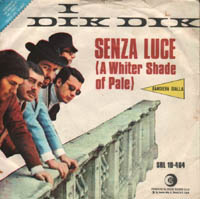 ------------- It's dark... I've fear... I have strong pains... A serpent is being born... That badly I did, I? |
Posted By: Angelo
Date Posted: November 23 2007 at 05:34
Erik, nice job! Stop posting for a while please, so I can catch up on my reading here! 
------------- http://www.iskcrocks.com" rel="nofollow - ISKC Rock Radio I stopped blogging and reviewing - so won't be handling requests. Promo's for ariplay can be sent to [email protected] |
Posted By: Nightfly
Date Posted: November 23 2007 at 06:20
|
Ah Ken Hensley, one of the true masters of the Hammond Organ. I'm in the mood to play some Uriah Heep now.
Nice update Erik!
|
Posted By: Jim Garten
Date Posted: November 23 2007 at 07:20
|
Shock Horror! Ken no longer uses a B3...  he's now using one of these new fangled C3s: he's now using one of these new fangled C3s:  The world will never be the same... -------------  Jon Lord 1941 - 2012 |
Posted By: erik neuteboom
Date Posted: November 23 2007 at 07:58
|
Jim, thanks for posting that exciting Ken Hensley picture, I knew it but I couldn't find it on the Internet. I have visited his own website but that was a bit disappointing.
By the way Jim, that Ken Hensley shot is also on the DVD The Classic Heep- The David Byron era, at one moment Ken starts to drink that plastic cup with beer (on the top of his Hammond on the left) and halfway he keeps it in his mouth while playing with two hands on the Hammond with a big smile
Angelo, I have decided to take an one day break in order to let my vistors and posters breath
Lady In Black, fine story!
Paul, thanks!
I would like to thank everybody for reading, visiting and posting
|
Posted By: Lady In Black
Date Posted: November 23 2007 at 08:14
|
Erik (and others): Which type of organ use Al Kooper in "Super Session"? I think that it's a Hammond organ. Unfortunately in the booklet of the CD the photograph was treated with fog/ to dots effect And I don't understand that model it is.
If I read correct various photo seems me a C3 model. But I am not very secure.
P.s.: extreme great "Stop" with a great Hammond! ------------- It's dark... I've fear... I have strong pains... A serpent is being born... That badly I did, I? |
Posted By: erik neuteboom
Date Posted: November 23 2007 at 08:38
|
Lady In Black, the book The A-Z Of Analogue Synthesizers Part One : A-M )
by Peter Forrest) mentiones that Al Kooper owned a Hammond B3
|
Posted By: Lady In Black
Date Posted: November 23 2007 at 09:06
Thanks, Erik.
What is your opinion about Bloomfield/ kooper/ Stills "Super Session"?
For me: Basically is a Blues Rock album with great Progressive moments and a great organ and guitar.The version of "season Of The Witch" here contained, "Stop", "Albert's Shuffle" and "His Holy Modal Majesty" are extreme great songs, also in Prog field, considered that this album is from 1968. A great trio, also for PA.
And for you? ------------- It's dark... I've fear... I have strong pains... A serpent is being born... That badly I did, I? |
Posted By: erik neuteboom
Date Posted: November 23 2007 at 09:15
|
Lady In Black, many, many years ago I bought the album Super Session because I am blues fan too, it's a classic |
Posted By: Lady In Black
Date Posted: November 23 2007 at 09:18
So today is the day of won of Hammond in your mind. ------------- It's dark... I've fear... I have strong pains... A serpent is being born... That badly I did, I? |
Posted By: erik neuteboom
Date Posted: November 23 2007 at 11:56
|
Lady In Black, I have had Hammonds on my mind the previous weeks,
I can even play the Hammond B3 in my dreams, using the foot pedals
like Barbara Dennerlein
http://nl.youtube.com/watch?v=60ut7yIuCEY - http://nl.youtube.com/watch?v=60ut7yIuCEY
http://nl.youtube.com/user/hans1970 - http://nl.youtube.com/user/hans1970
|
Posted By: Lady In Black
Date Posted: November 23 2007 at 12:06
Oh my God... You cannot betray your wife with a Hammond... You don't succeed to do sex!
Seriously... From Brian Auger I succeeded to make to buy Mandrakeroot the first three album of the Trinity. Not ugly. The only Prog moment is the Hammond work, nevertheless.
I don't have an idea like 60's production of Auger (with The Steampacket and the Mod Years compilation that is present in PA). You can help me?
(excuse me for this use of this thread. But I think that this post have a sense, since Auger is a Hammond king) ------------- It's dark... I've fear... I have strong pains... A serpent is being born... That badly I did, I? |
Posted By: erik neuteboom
Date Posted: November 23 2007 at 12:27
|
Lady In Black, this weekend I will publish my Hammond Organ Special Part 4, it includes a contribution by Dick Heath, I am sure he will mentions Brian Auger, otherwise you can send him a PM for recommendations. I am not really into Brian Auger, I only have a concert video from a 1989 jazz festival concert that showcases his incredible talent on the Hammond organ By the way, I have already betrayed my wife with a Mellotron, she gets use to my fascination for vintage keyboards but I have promised her to keep some time and energy for other things |
Posted By: Lady In Black
Date Posted: November 23 2007 at 16:39
Thanks, Erik. ------------- It's dark... I've fear... I have strong pains... A serpent is being born... That badly I did, I? |
Posted By: erik neuteboom
Date Posted: November 23 2007 at 16:41
|
This evening my guest is Glass House aka 'Dutch Tony', at this moment we are blown away by Julian's Treatment, outstanding, very compelling work on the mighty Hammond organ Check out:
http://www.progarchives.com/album.asp?id=7770">
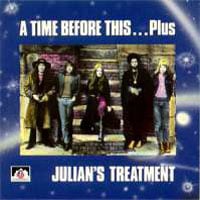 Eclectic Prog Eclectic Prog (Boxset/Compilation, 1990) Avg: 4.00/5 from 2 ratings http://www.progarchives.com/album.asp?id=7770 - JULIAN'S TREATMENT — A Time Before This ... Plus (1970-73)
Review by http://www.progarchives.com/Collaborators.asp?id=3684 - erik neuteboom (erik neuteboom) Special Collaborator Symphonic Prog Expert
|
Posted By: glass house
Date Posted: November 23 2007 at 17:18
|
Must admit i never before heard the music of Julian's Treatment, and it is indeed very good!!
|
Posted By: erik neuteboom
Date Posted: November 23 2007 at 17:21
|
Thanks for the positive words about Julian's Treatment, Dutch Tony
|
Posted By: erik neuteboom
Date Posted: November 24 2007 at 07:03
|
I hope to publish my Hammond Organ Special Part 4 this weekend, I am glad that
fellow Hammond freak Chicapah is willing to contribute with a personal story
This is Vanilla Fudge with Mark Stein on the Hammond B3:
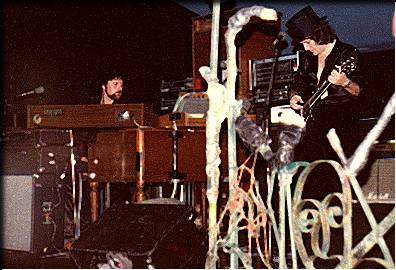 |
Posted By: erik neuteboom
Date Posted: November 24 2007 at 12:30
|
I have just added the album De Fluff by the Swedish duo Bootcut (a musical project of Beardfish their keyboardplayer) to the Chapter 3 of my Hammond Organ Special entitled My Hammond Drenched Recommendations, this CD is a must for Hammond freaks |
Posted By: Lady In Black
Date Posted: November 25 2007 at 08:06
|
Yesterday I and Mandrakeroot have ordered the Steampacket (Brian Auger) CD (in USA version titled "Ain't that loving you baby" c/o Red Moon Records.
We are naturally anxious of to have it between the hands! ------------- It's dark... I've fear... I have strong pains... A serpent is being born... That badly I did, I? |
Posted By: erik neuteboom
Date Posted: November 25 2007 at 08:46
|
I am looking forward to your reviews about Steampacket, Brian Auger is awesome on his Hammond organ |
Posted By: erik neuteboom
Date Posted: November 26 2007 at 06:23
| As soon as I have received Dick Heath his contribution (he is very busy) I will publish Part 4, including the contributions by PA members (their personal Hammond stories). |
Posted By: Sole
Date Posted: November 27 2007 at 19:10
Great post, Lady!
And, in general, great thread, erik! ------------- The Sun is my name... The Moon is my death! |
Posted By: erik neuteboom
Date Posted: November 28 2007 at 05:42
|
Multo grazie Sole .. but is your avatar
 the real "lady in black" ...?
|
Posted By: Sole
Date Posted: November 28 2007 at 06:06
No, is only Marianne Faithful in 1964. Because in the 60's Marianne was one of the more beautiful women in the World. And I adore this photo because, in a certain sense, reflects what I was in the 60's. Also if my body is more similar to this in 60's:
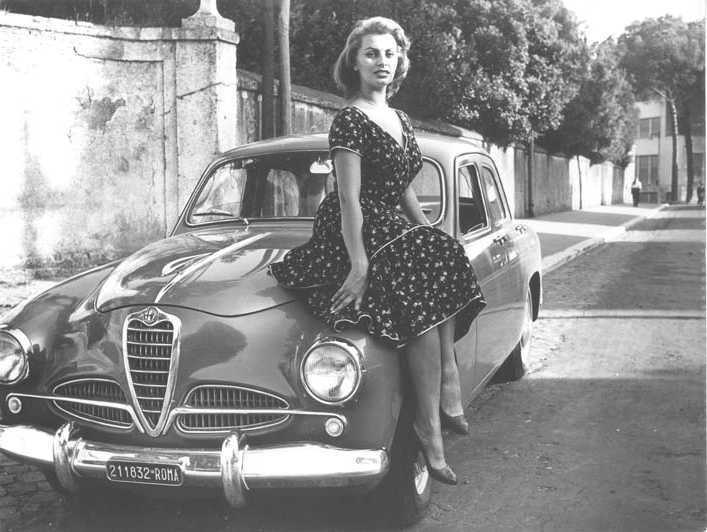   So, my life style is forged from my body, also if when I was young (in 60's and 70's) I was like much curbed girls that didn't want to hunt in the troubles. Certainly, I have wanted (because a lot they asserted it), to enter in the world of the show I wouldn't have disfigured. pleased to dress me me like the girls of the show... I had a body from envy (for the period, I can say it, was really the embodiment of the rent of beauty).
In conclusion I admit that my avatar is a little one too provocatory. However... How much would please to return me young... How in the 60's!
But this is a Hammond special and... So i post this photo:
 ------------- The Sun is my name... The Moon is my death! |
Posted By: erik neuteboom
Date Posted: November 28 2007 at 06:15
|
I recognized Marianne Faithful because I have read books about her life, a beautiful and multi-talented woman but as so many artists in those days quite self-destructive and I will never forget her horrible events when she was put into jail in Jamaica, that was hell on earth By the way, you (Sophia Loren's younger sister?) and Lady In Black add a very special flavor to this site, Italian women and prog are an interesting combination
Order, order now so back to this thread,
http://www.amazon.com/gp/product/images/B000002IR7/ref=dp_image_0/105-3380758-6476466?ie=UTF8&n=5174&s=music">
 I will PM Dick about his contribution for the Hammond Organ
Special Part 4, I can hardly wait to publish it!
|
Posted By: Dick Heath
Date Posted: November 28 2007 at 07:47
|
Erik
Remind me, are you tackling the issue of East European keyboardist having little choice but to use fake Russian-built Hammonds? Alan Freeman of Ultima Thule (co-author Crack in A Cosmic Egg), interviewed Collegium Musicum's Marian Varga in the late 90's and got that info. If you check out CM's Live album (the one with the band gathered round a steam-roller in the photo!!), then you realise in the right hands the fake could do the business.
http://sk.wikipedia.org/wiki/Obr%C3%A1zok:Collegium_Musicum_Live_-_LP.jpg">  ------------- The best eclectic music on the Web,8-11pm BST/GMT THURS. CLICK ON: http://www.lborosu.org.uk/media/lcr/live.php - http://www.lborosu.org.uk/media/lcr/live.php Host by PA's Dick Heath. |
Posted By: erik neuteboom
Date Posted: November 28 2007 at 10:29
|
Dick, it's up to what you think is interesting for the Hammond Organ Special: this evening I will publish Part 4 and then you can add your contribution by yourself whenever you want, with you own lay-out. So go ahead, we are all eagerly waiting for your words about the Hammond organ By the way, I owned that live album, to me it sounded as the Eastern European version of early ELP!
|
Posted By: erik neuteboom
Date Posted: November 28 2007 at 12:55
|
THE HAMMOND ORGAN
“From a poor man’s pipe organ to a progrock musician's big band” PART FOUR Chapter 10: A Hammond story by PA member and jazz specialist Dick Heath Chapter 11: PA members about the Hammond organ and their favorite Hammond Albums Chapter 12: This is not a Hammond organ! (about the Farfisa, Gibson and Vox Continental organ) Chapter 13: Sources of information Chapter 14: Interesting links CHAPTER 10: A HAMMOND STORY BY PA MEMBER AND JAZZ SPECIALIST DICK HEATH Work in progress, his contribution follows later this week! CHAPTER 11: PA MEMBERS ABOUT THE HAMMOND ORGAN AND THEIR FAVORITE HAMMOND ALBUMS A fine example of Hammond fascination on the Forum:
Posted By: Easy Money Date Posted: November 28 2007 at 14:19
Posted By: erik neuteboom Date Posted: November 28 2007 at 17:05
Posted By: Chicapah Date Posted: November 28 2007 at 18:53
Posted By: erik neuteboom Date Posted: November 29 2007 at 05:14
Posted By: Jim Garten Date Posted: November 29 2007 at 07:27
Posted By: erik neuteboom Date Posted: November 29 2007 at 07:34
Posted By: Certif1ed Date Posted: November 29 2007 at 08:11
Posted By: glass house Date Posted: November 29 2007 at 08:56
Posted By: erik neuteboom Date Posted: November 29 2007 at 10:46
Posted By: Dick Heath Date Posted: November 29 2007 at 12:39
Posted By: erik neuteboom Date Posted: November 29 2007 at 12:51
Posted By: Tony R Date Posted: November 29 2007 at 13:09
Posted By: Tony R Date Posted: November 29 2007 at 13:09
Posted By: Tony R Date Posted: November 29 2007 at 13:09
Posted By: Tony R Date Posted: November 29 2007 at 13:10
Posted By: Tony R Date Posted: November 29 2007 at 13:10
Posted By: Tony R Date Posted: November 29 2007 at 13:10
Posted By: Tony R Date Posted: November 29 2007 at 13:11
Posted By: Tony R Date Posted: November 29 2007 at 13:11
Posted By: Tony R Date Posted: November 29 2007 at 13:11
Posted By: Tony R Date Posted: November 29 2007 at 13:12
Posted By: Tony R Date Posted: November 29 2007 at 13:12
Posted By: Tony R Date Posted: November 29 2007 at 13:12
Posted By: Tony R Date Posted: November 29 2007 at 13:12
Posted By: Tony R Date Posted: November 29 2007 at 13:13
Posted By: Tony R Date Posted: November 29 2007 at 13:16
Posted By: erik neuteboom Date Posted: November 29 2007 at 13:22
Posted By: erik neuteboom Date Posted: November 29 2007 at 15:43
Posted By: glass house Date Posted: November 29 2007 at 16:09
Posted By: Nightfly Date Posted: November 29 2007 at 16:26
Posted By: erik neuteboom Date Posted: November 29 2007 at 17:28
Posted By: Dick Heath Date Posted: November 29 2007 at 17:43
Posted By: erik neuteboom Date Posted: November 29 2007 at 17:51
Posted By: Tony R Date Posted: November 29 2007 at 18:02
|
|||||||||||||||||||||||||||||||||||||||
| Print Page | Close Window
Forum Software by Web Wiz Forums® version 11.01 - http://www.webwizforums.com Copyright ©2001-2014 Web Wiz Ltd. - http://www.webwiz.co.uk |

 erik neuteboom wrote:
erik neuteboom wrote:


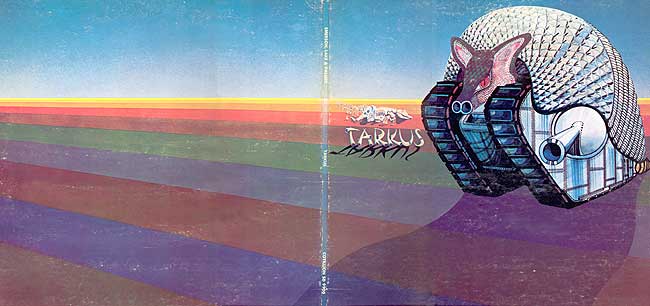



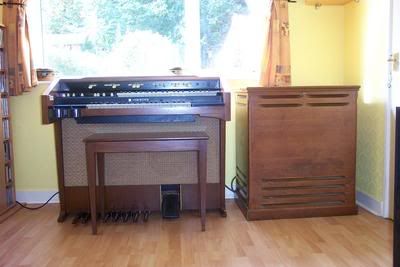



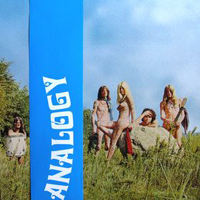
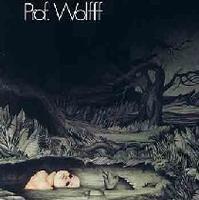



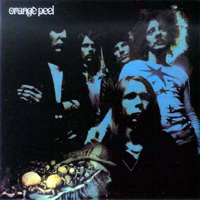

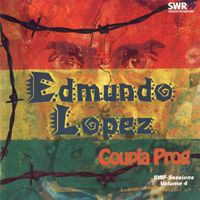
 , soon it became the most popular one) but later keyboard player Ray Manzarek switched to the Gibson G101 combo organ because he was dissatisfied with the new plastic keys after the factory had moved to Italy. On Absolutely Live you can enjoy that Gibson organ sound in its full splendor!
, soon it became the most popular one) but later keyboard player Ray Manzarek switched to the Gibson G101 combo organ because he was dissatisfied with the new plastic keys after the factory had moved to Italy. On Absolutely Live you can enjoy that Gibson organ sound in its full splendor! , you can hear that distinctive sound on songs like Arnold Layne and especially on the Pink Floyd At Pompeii video/DVD (in combination with the Hammond organ) for the more psychedelic atmospheres.
, you can hear that distinctive sound on songs like Arnold Layne and especially on the Pink Floyd At Pompeii video/DVD (in combination with the Hammond organ) for the more psychedelic atmospheres.

